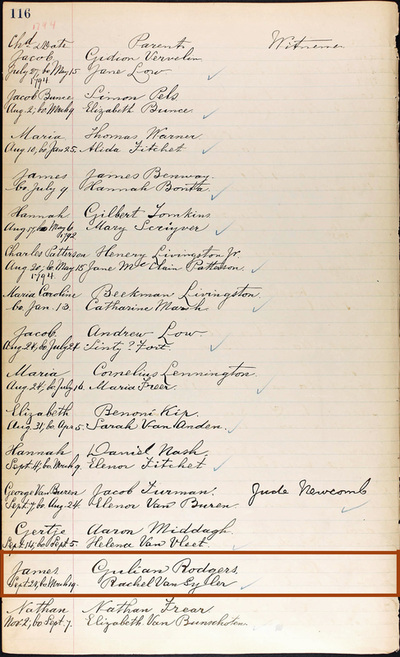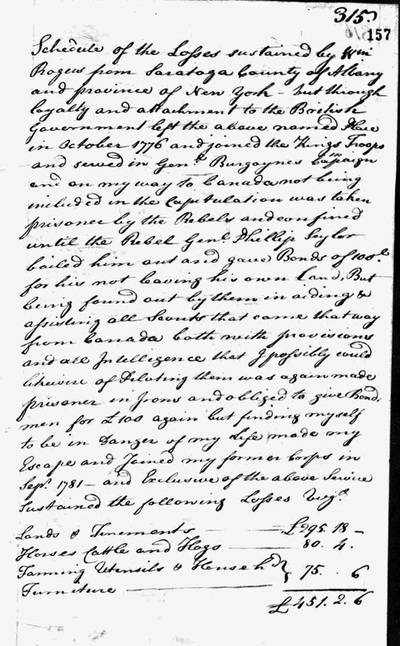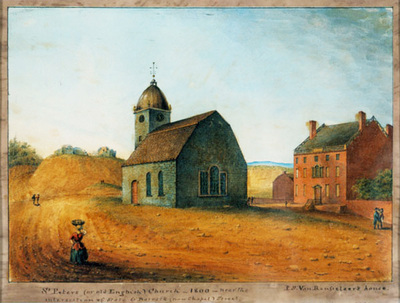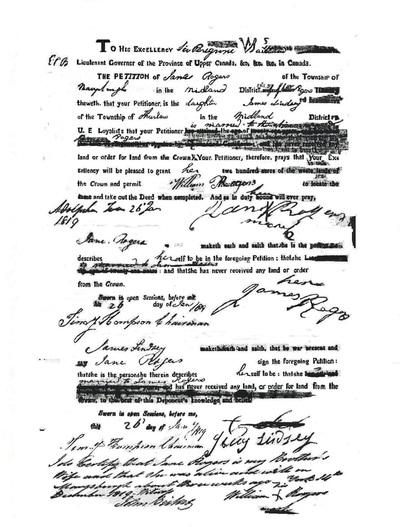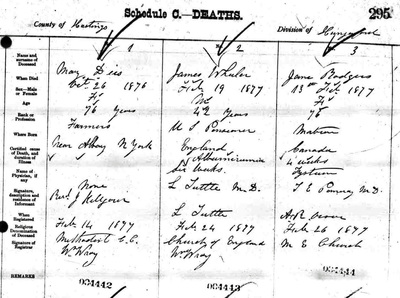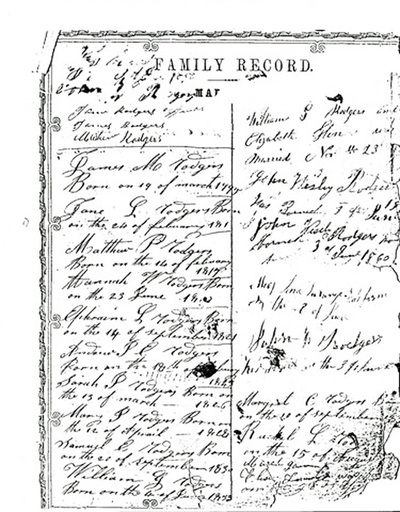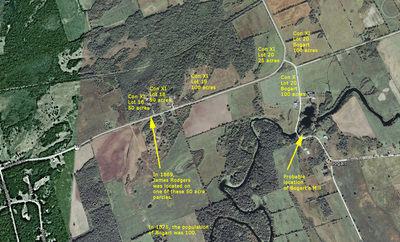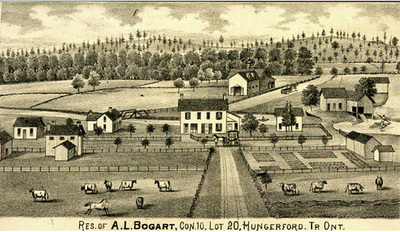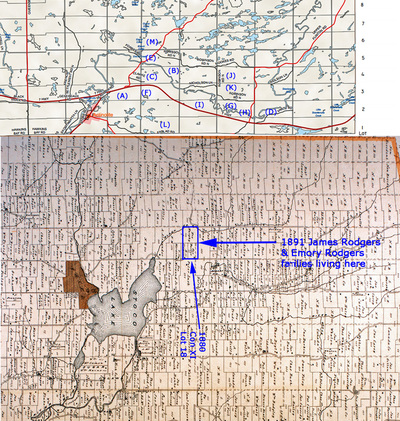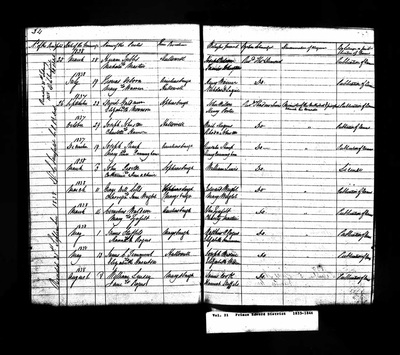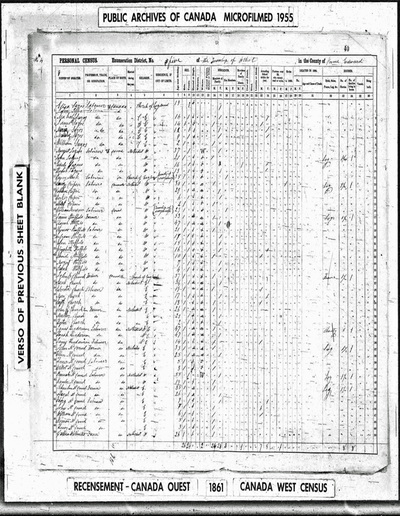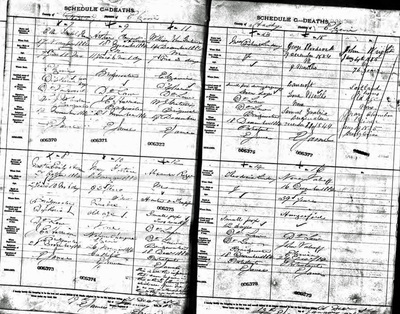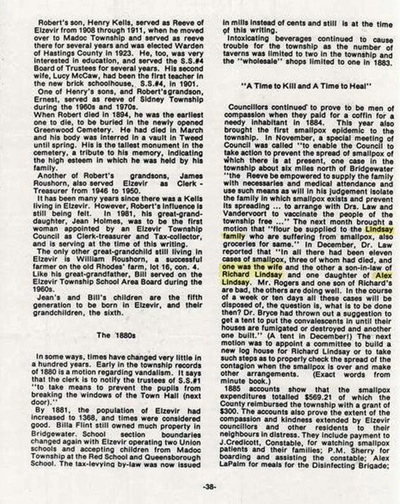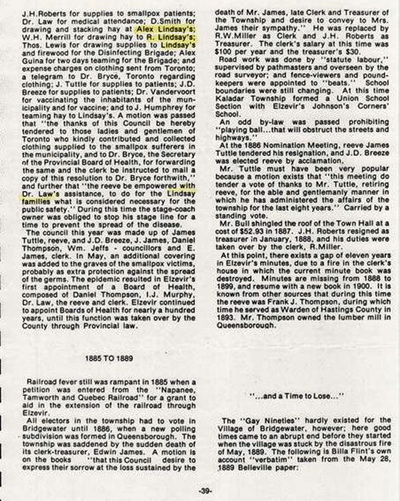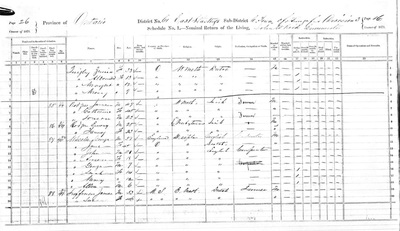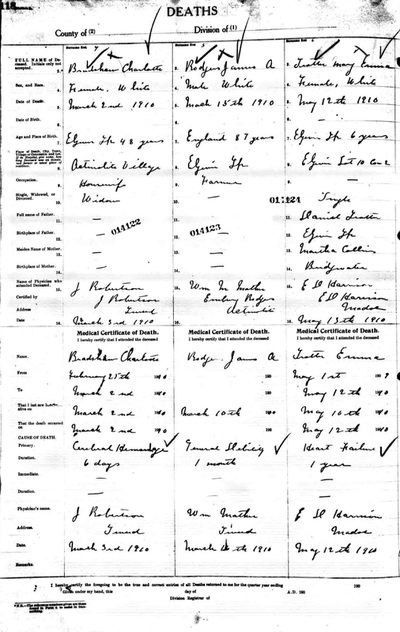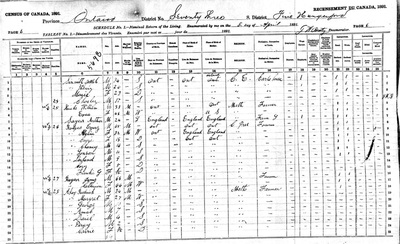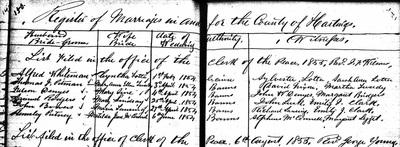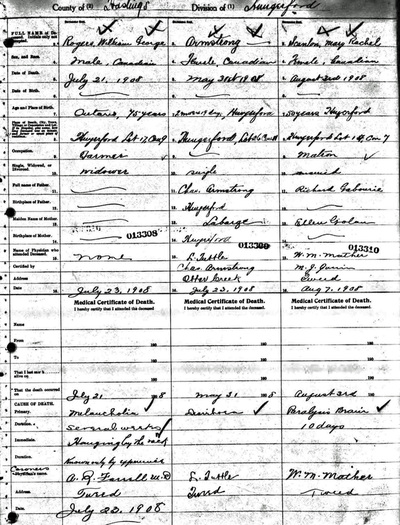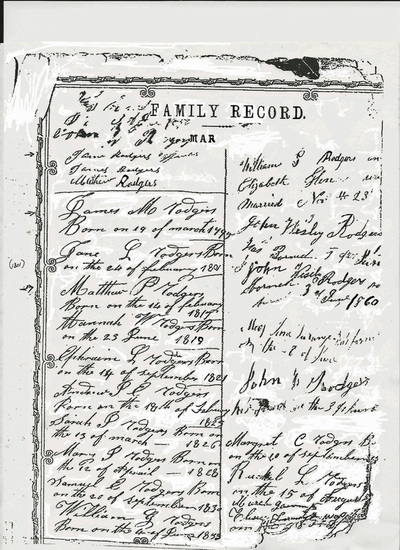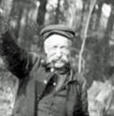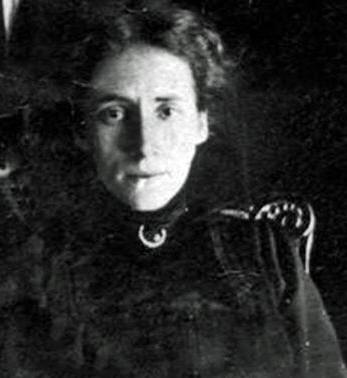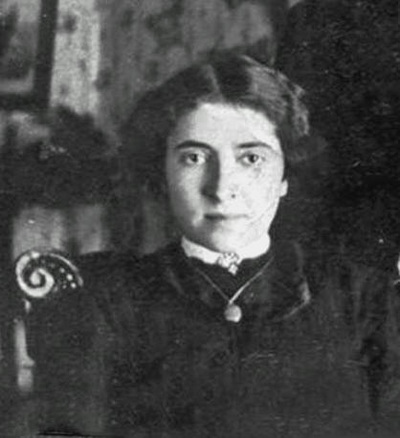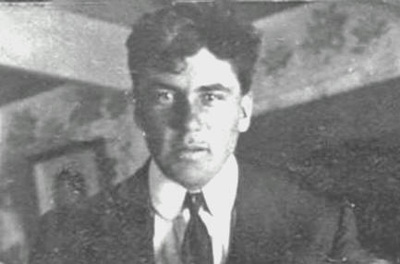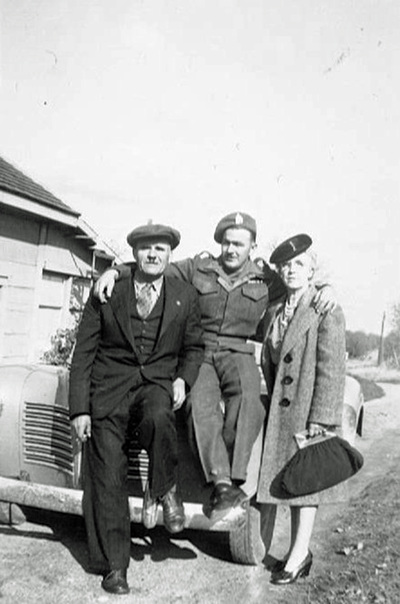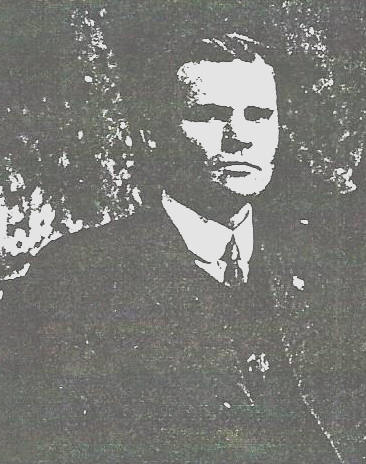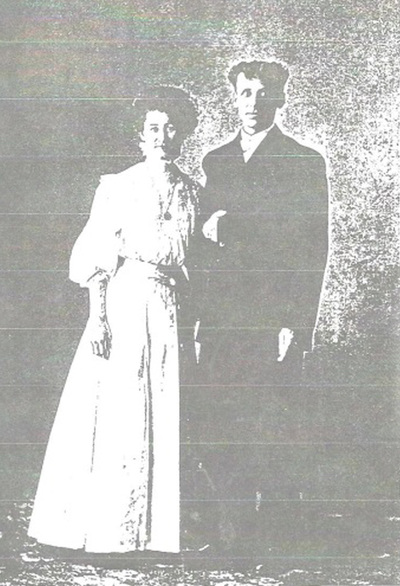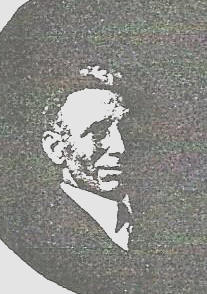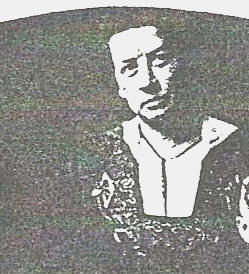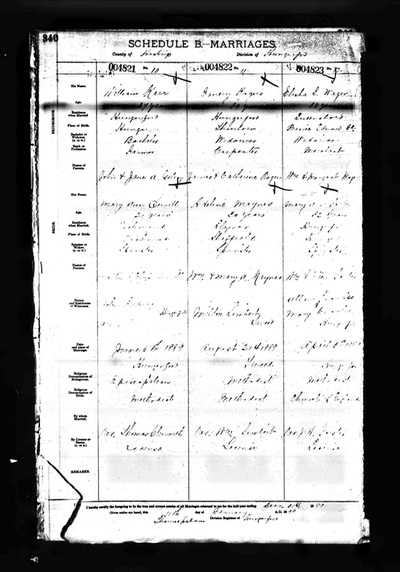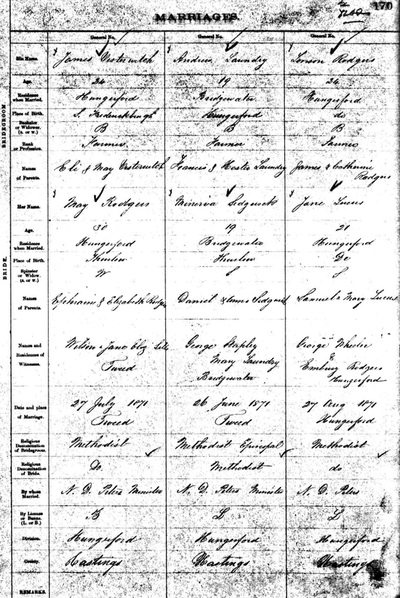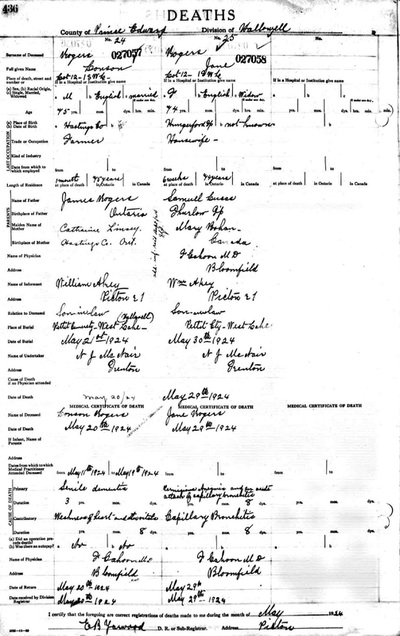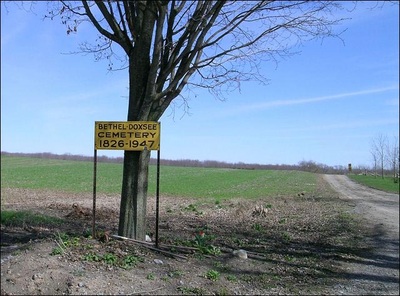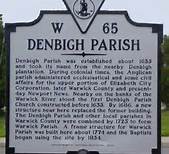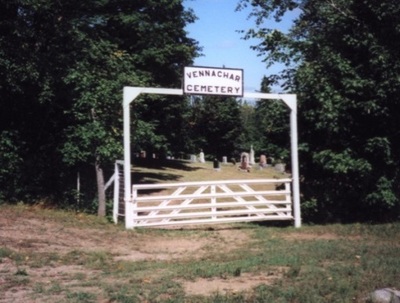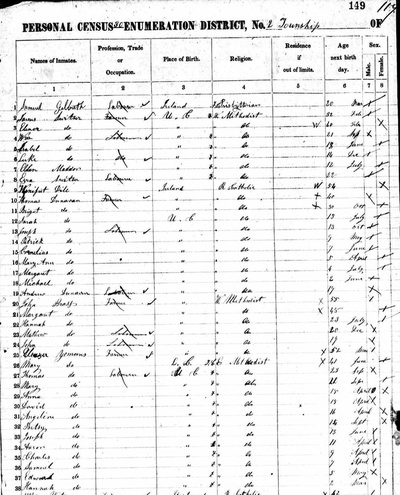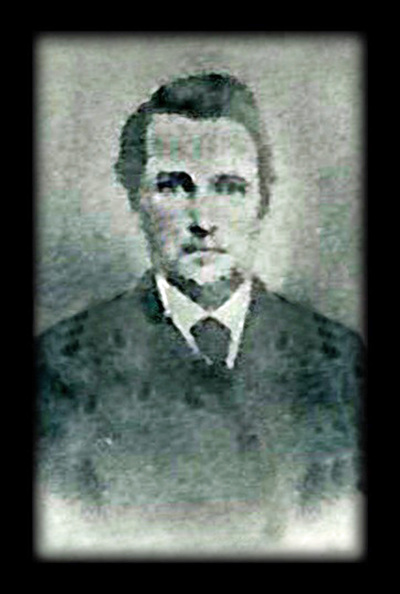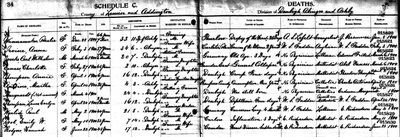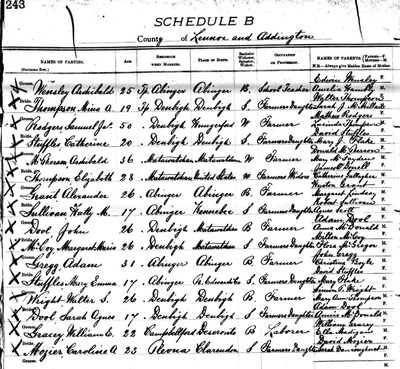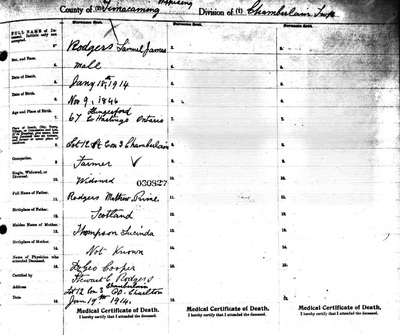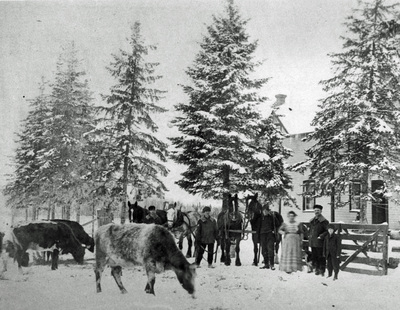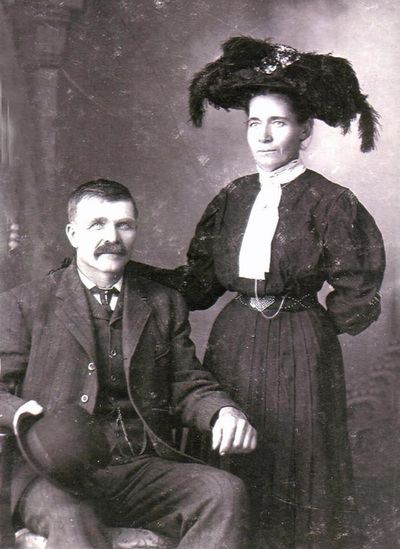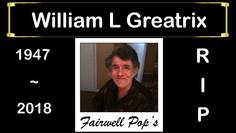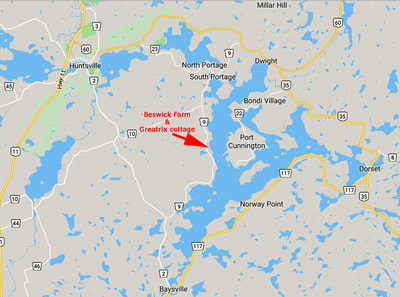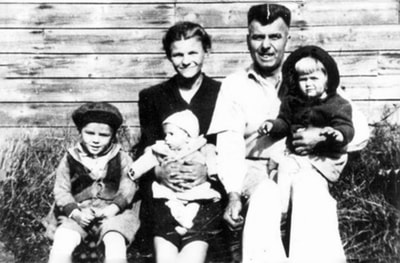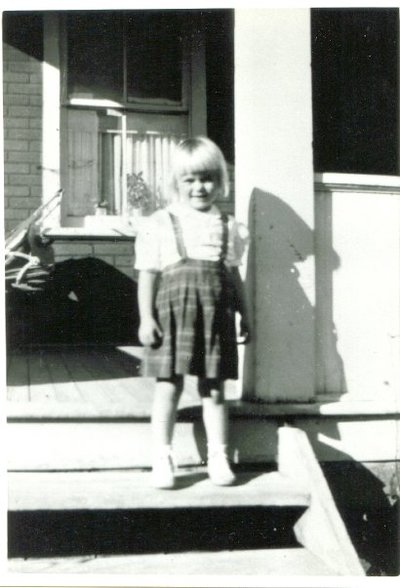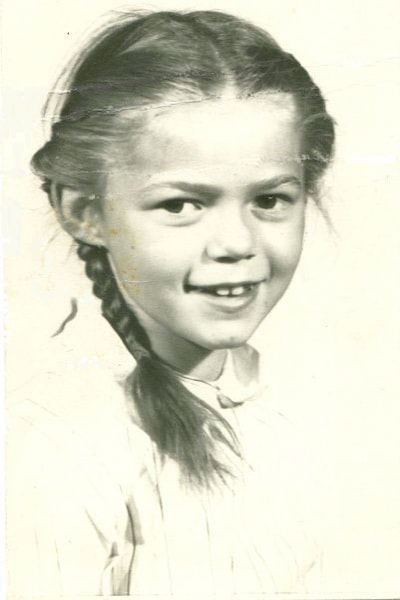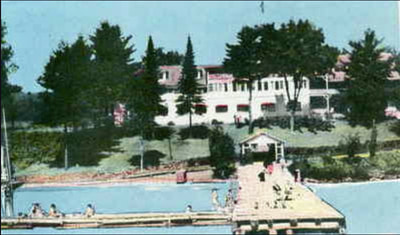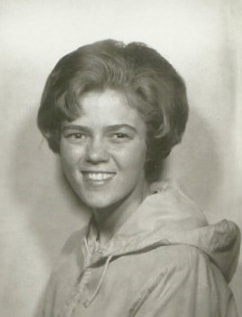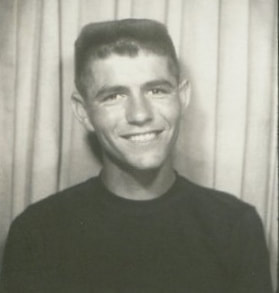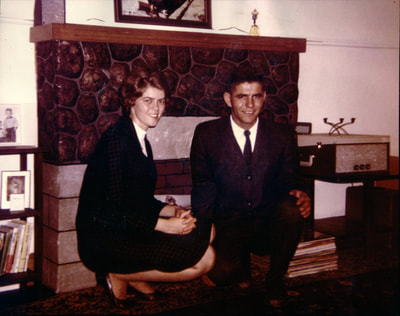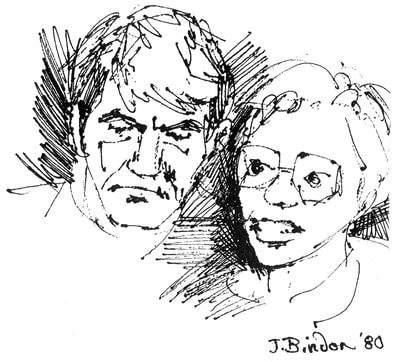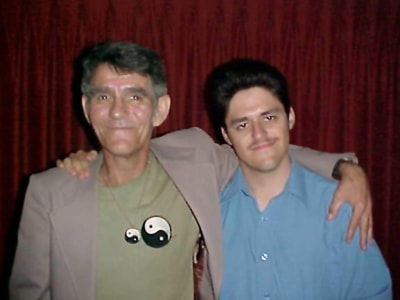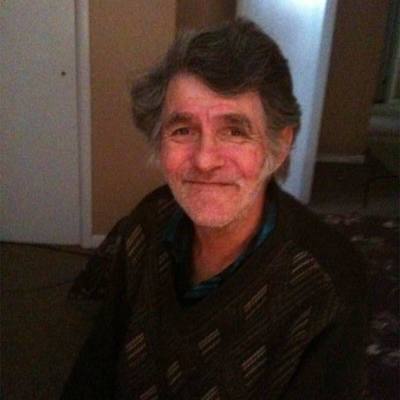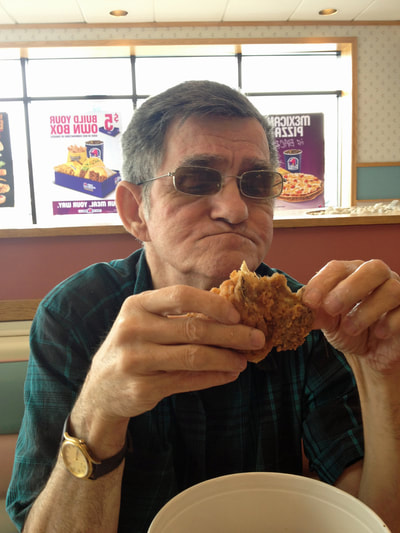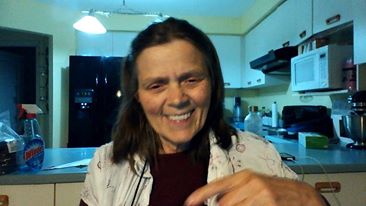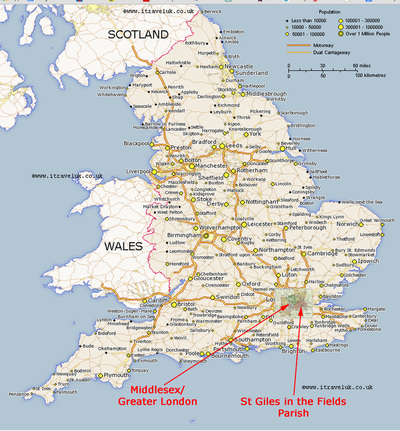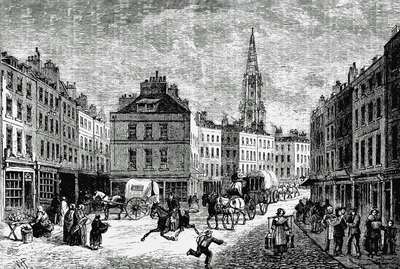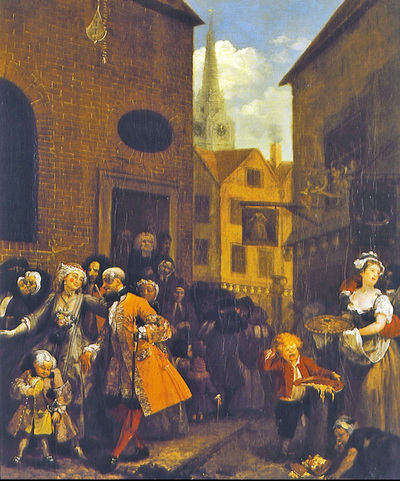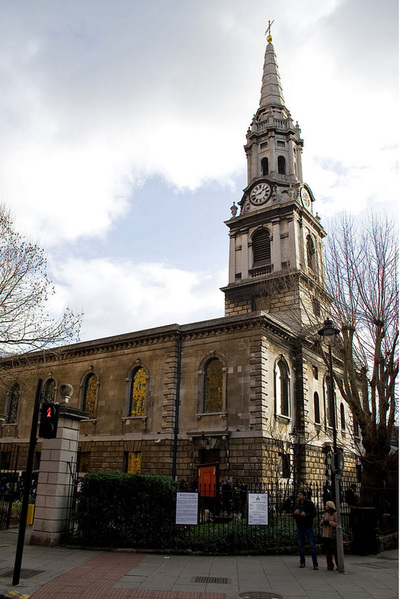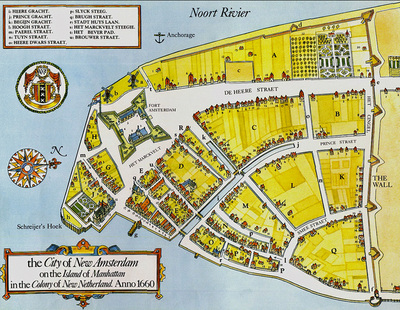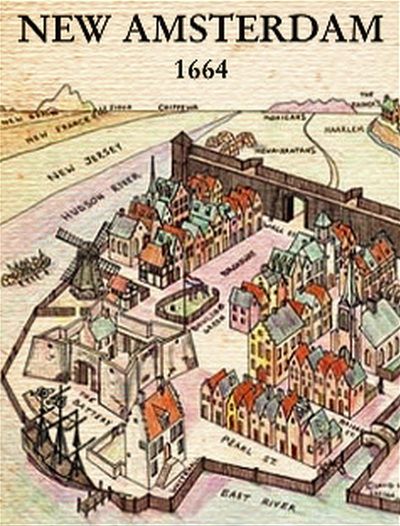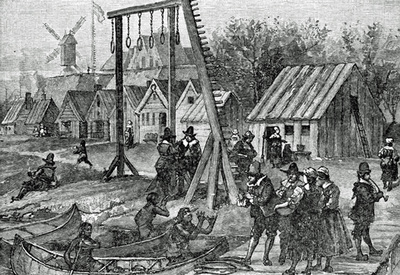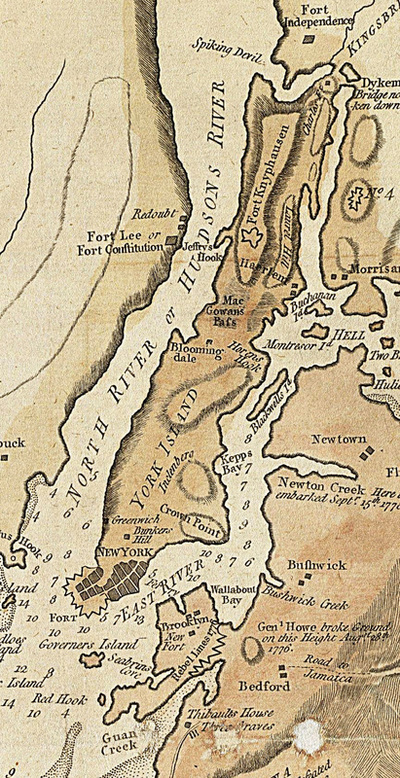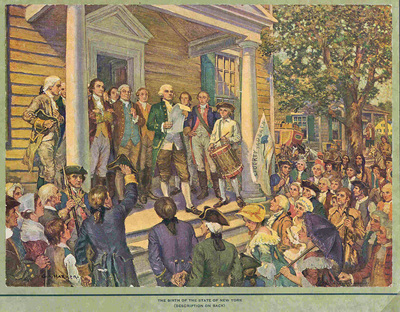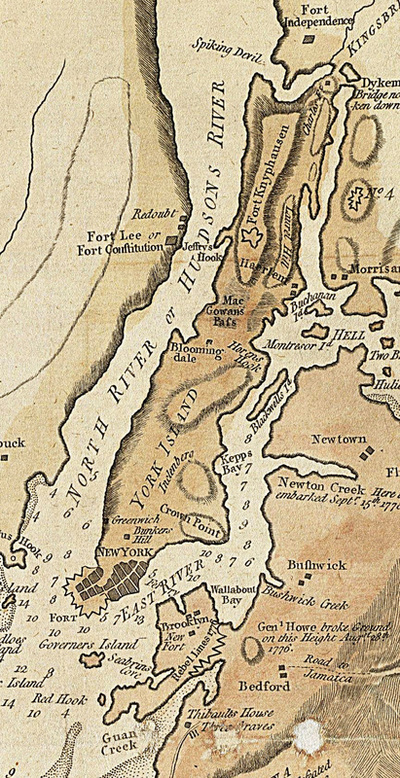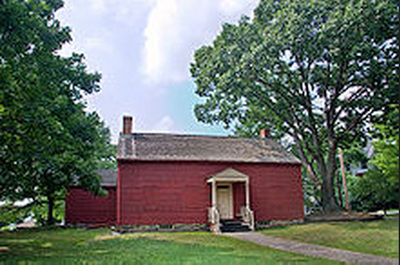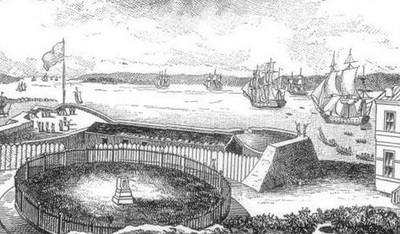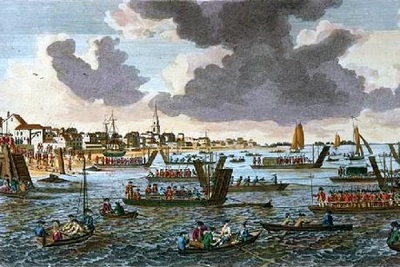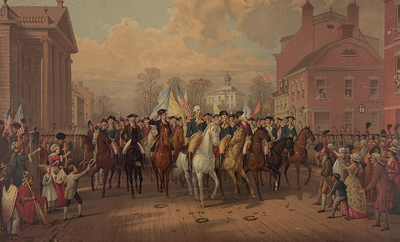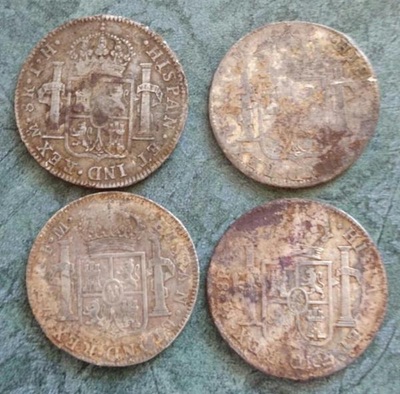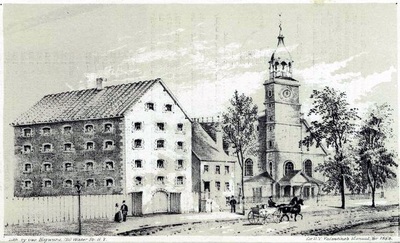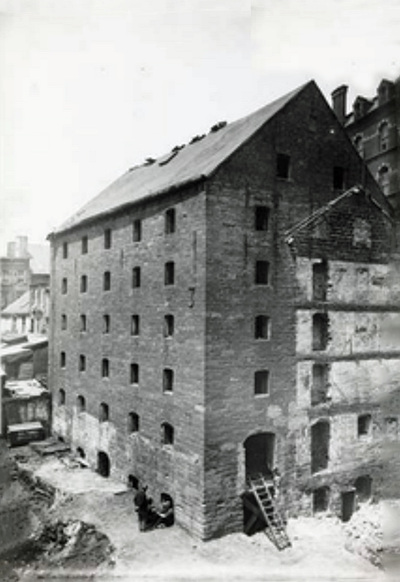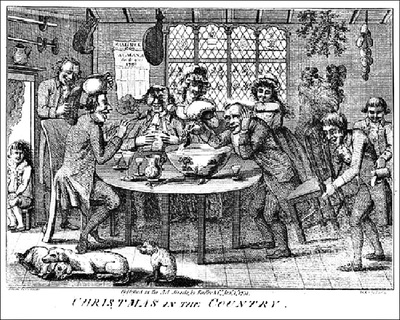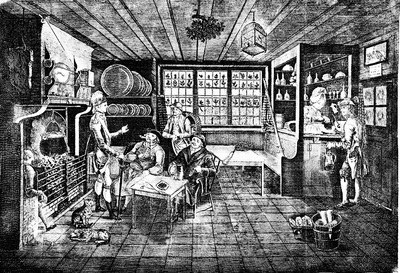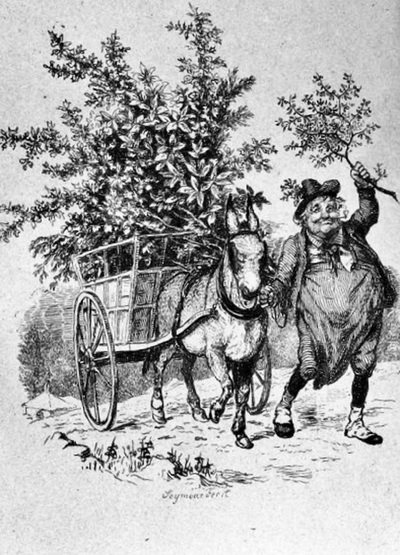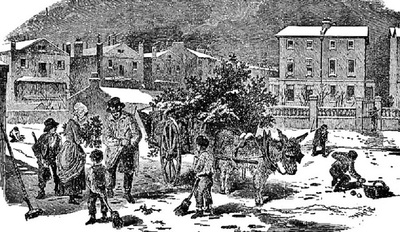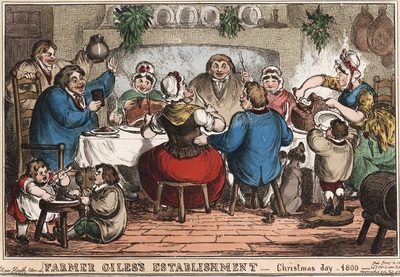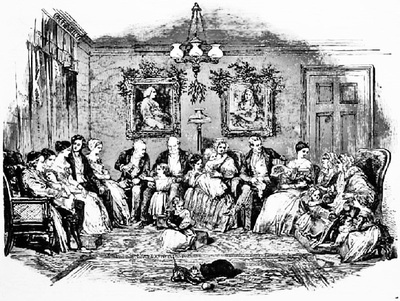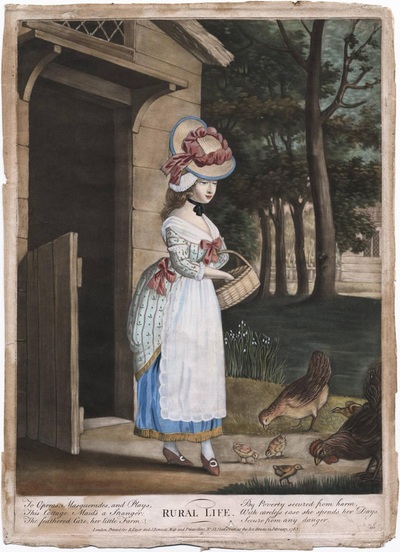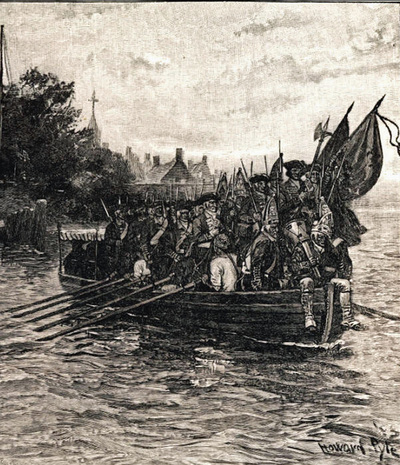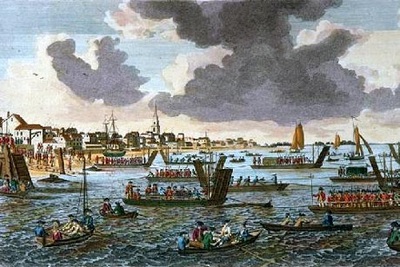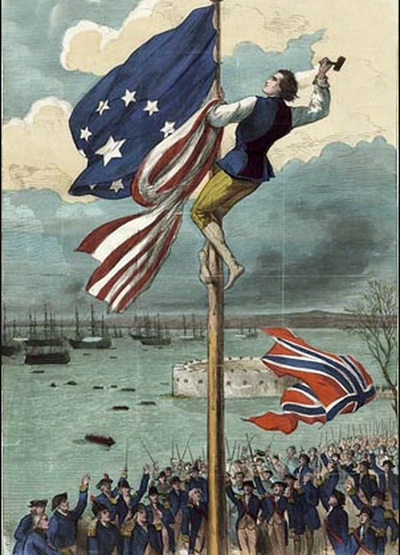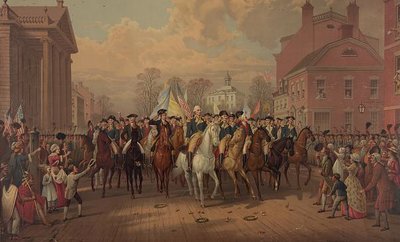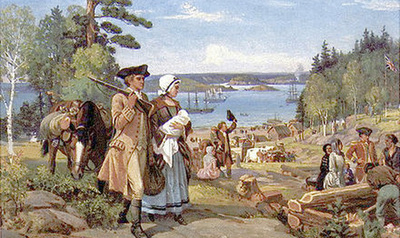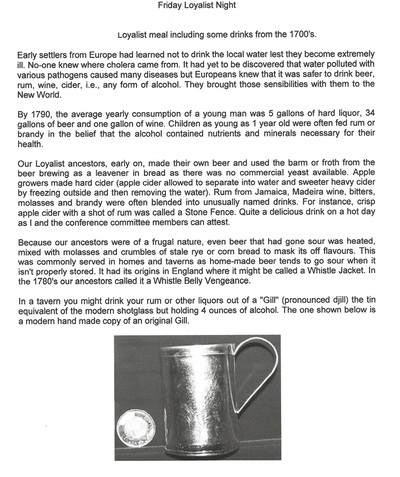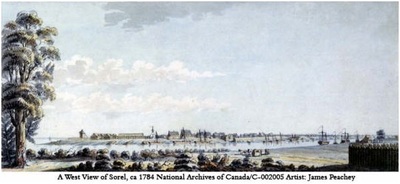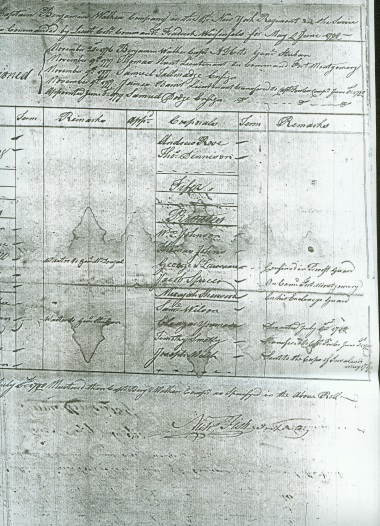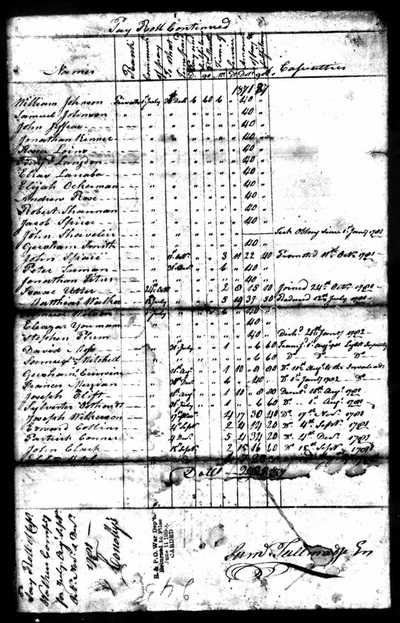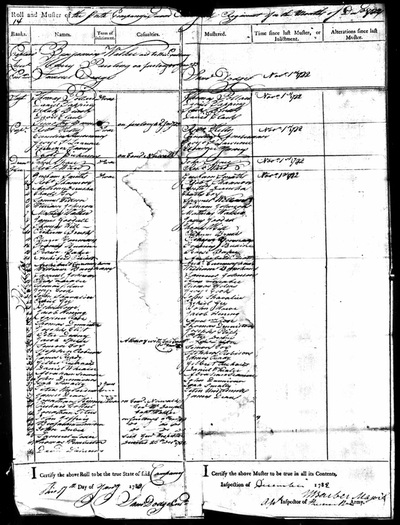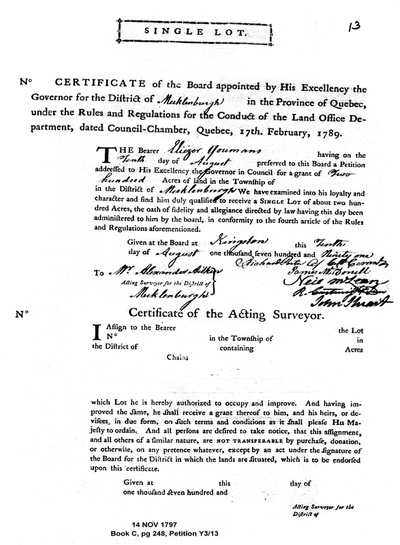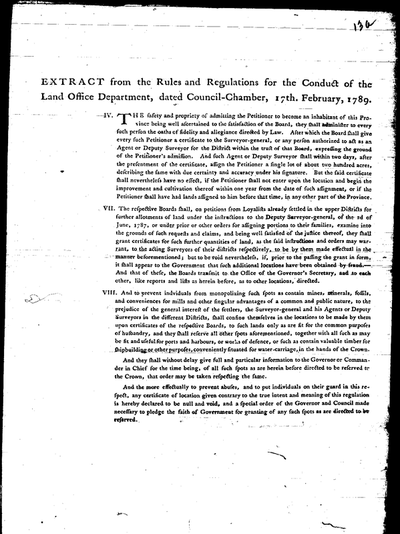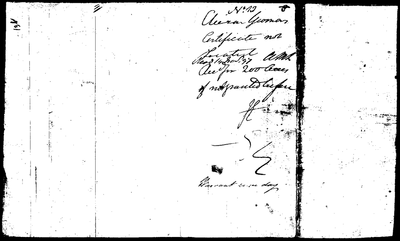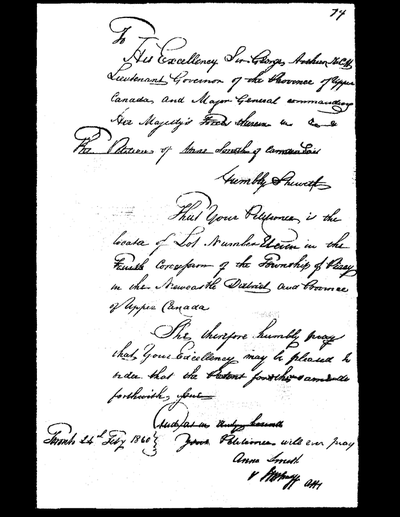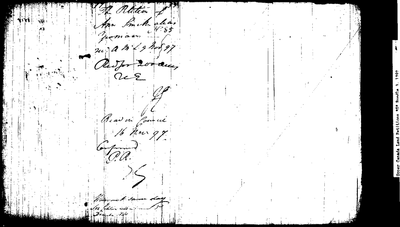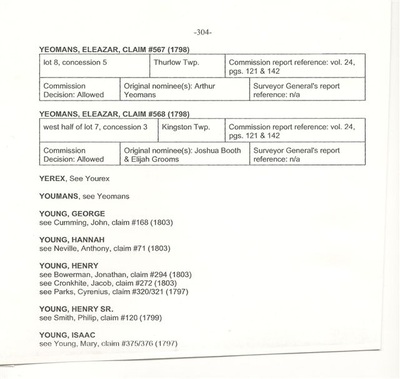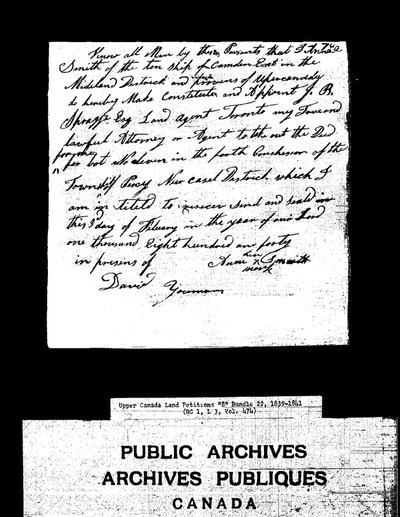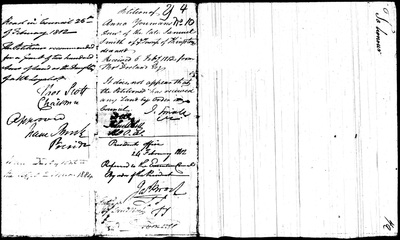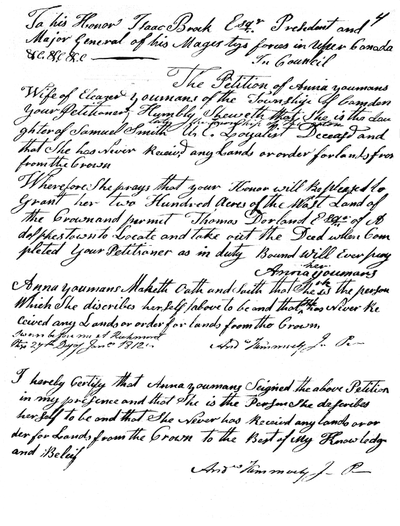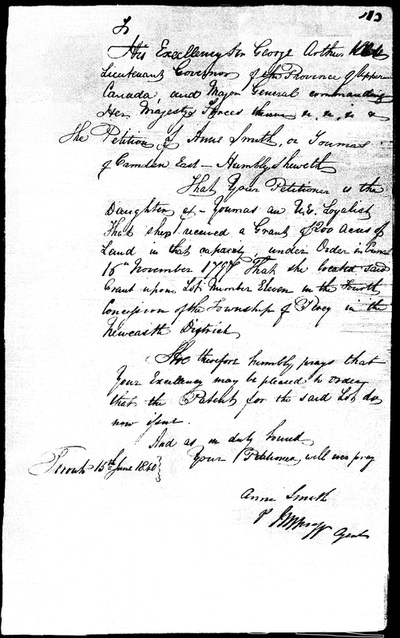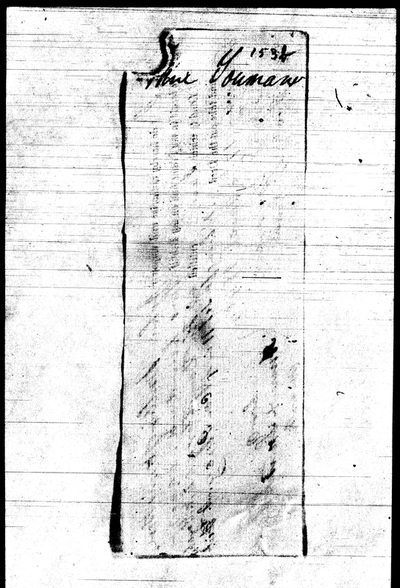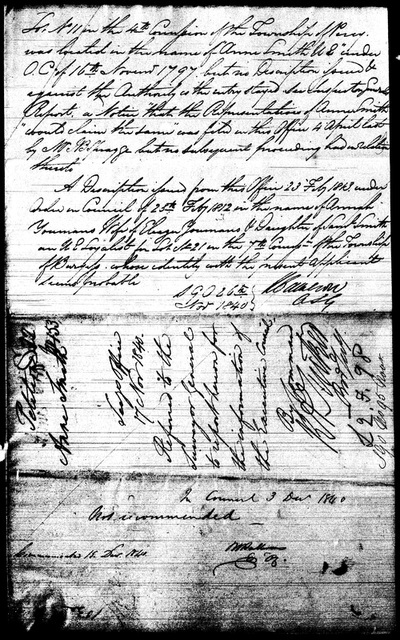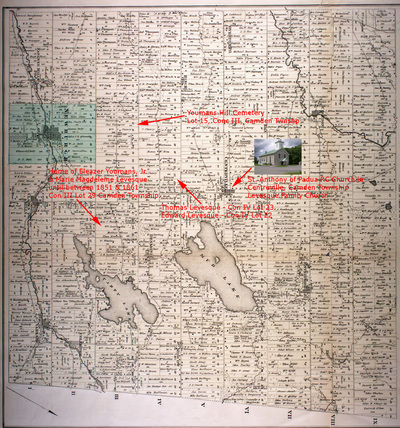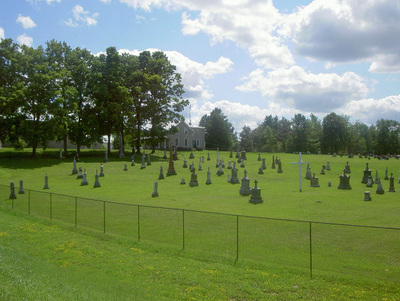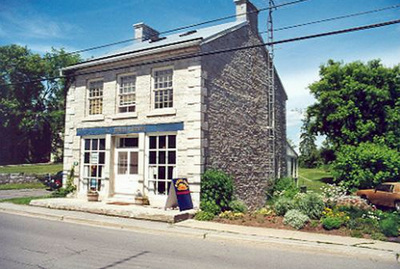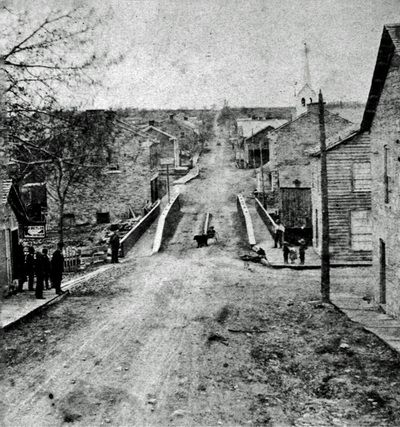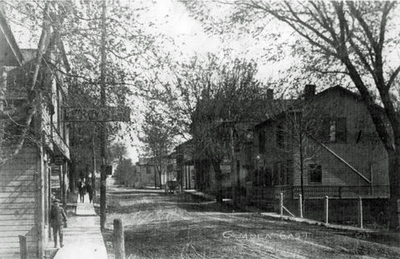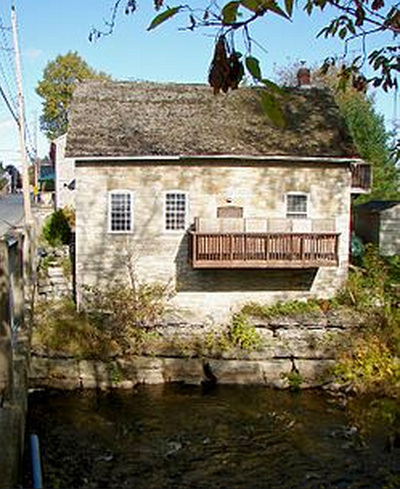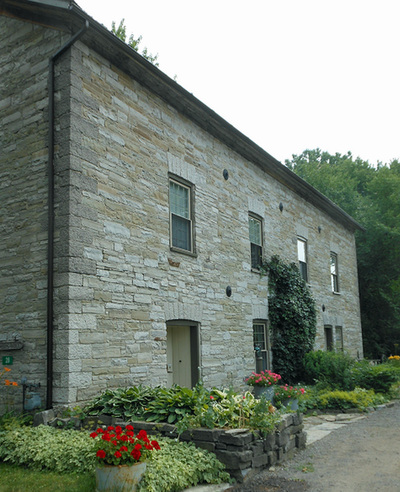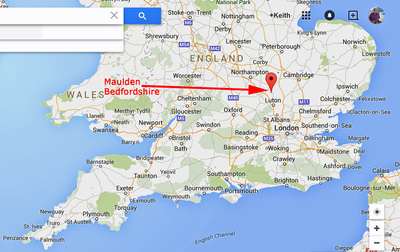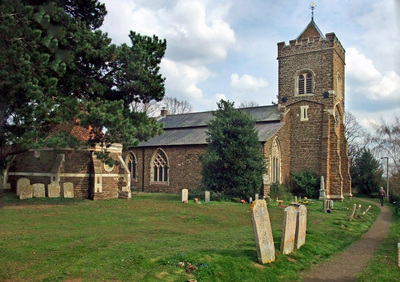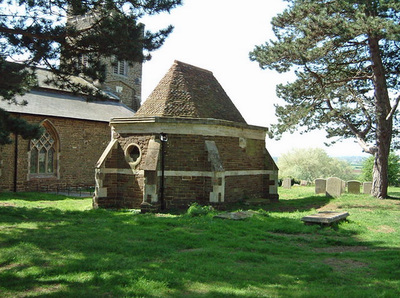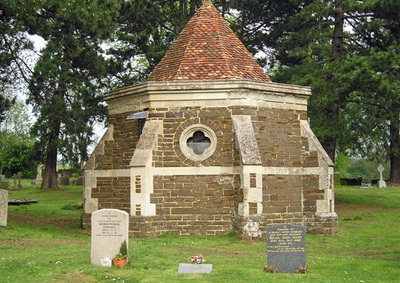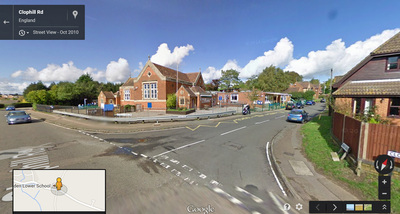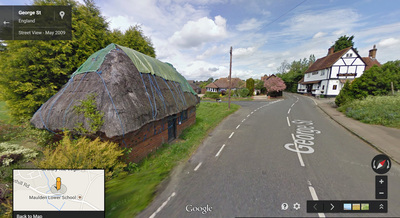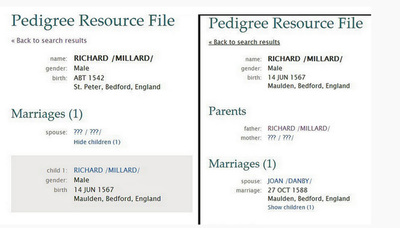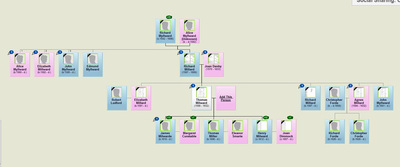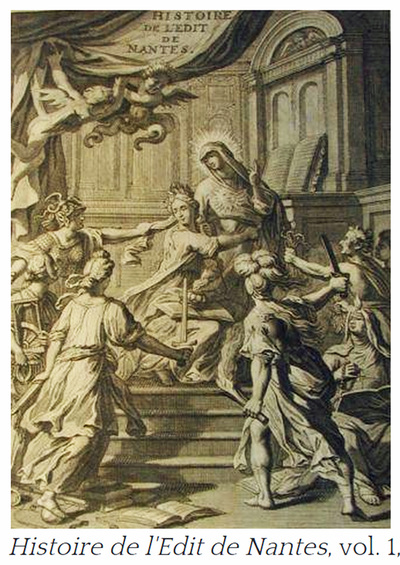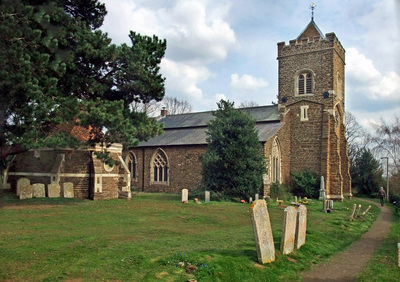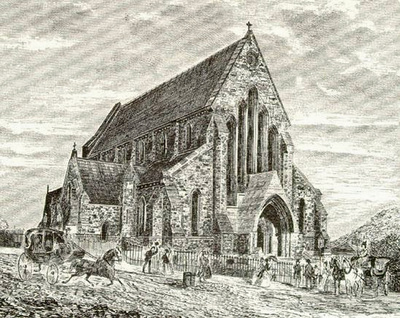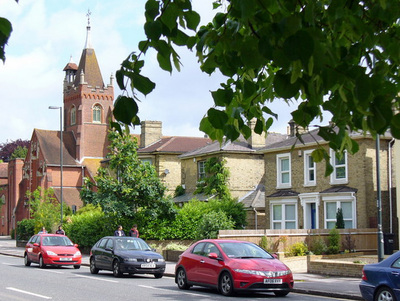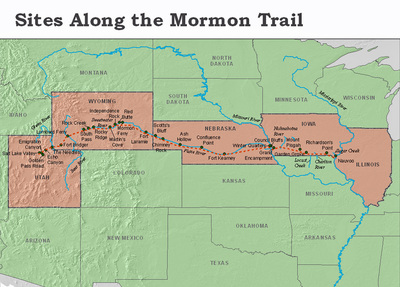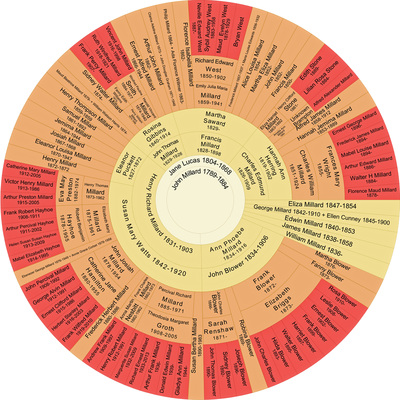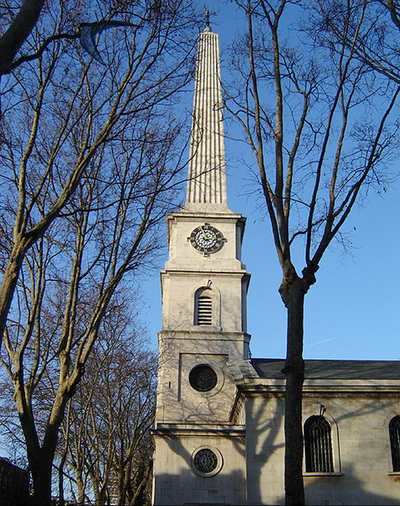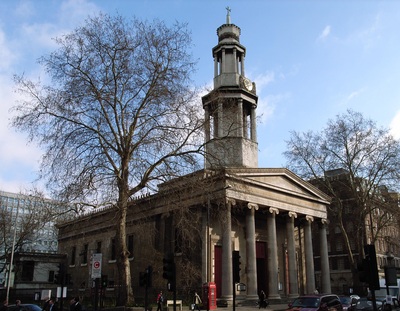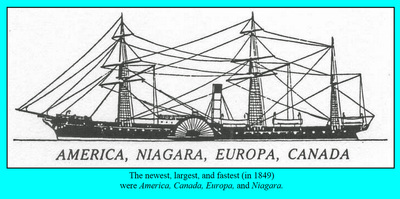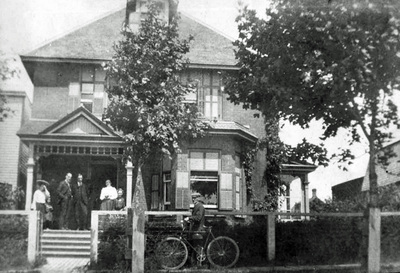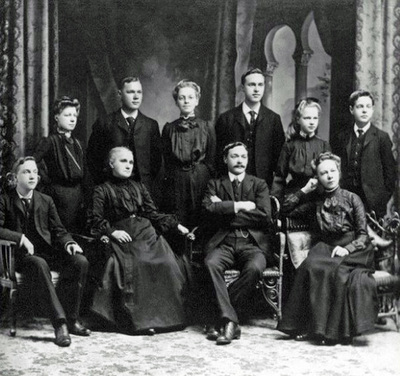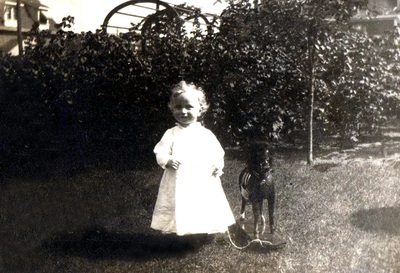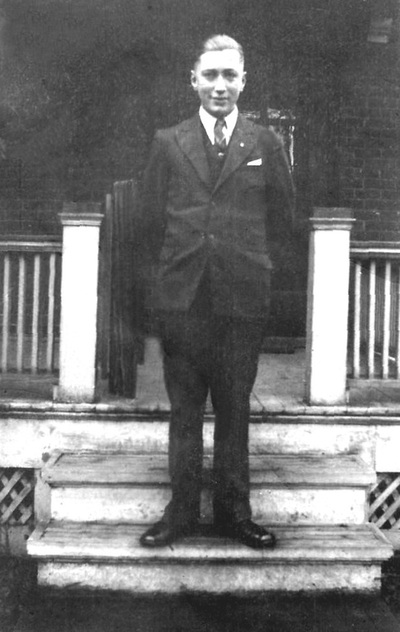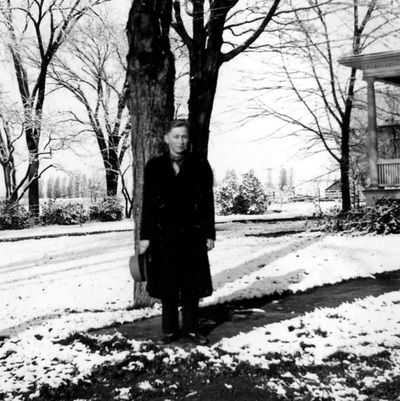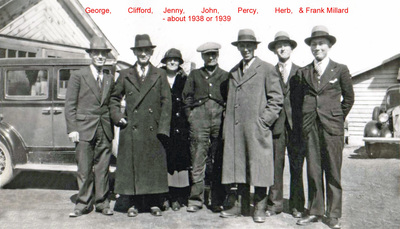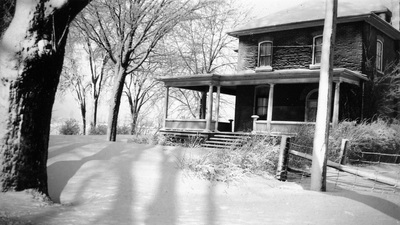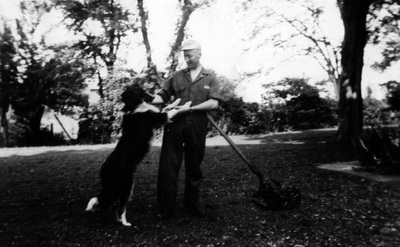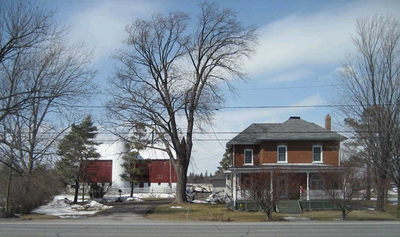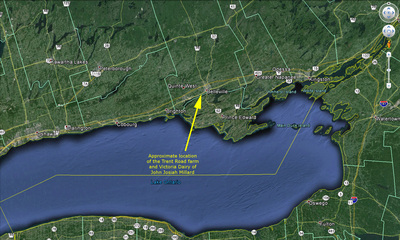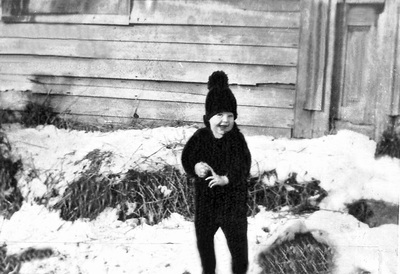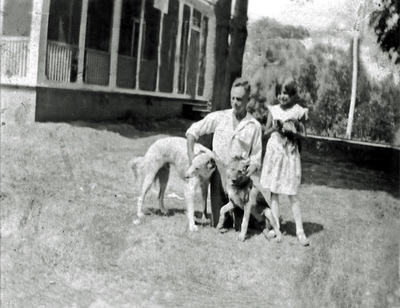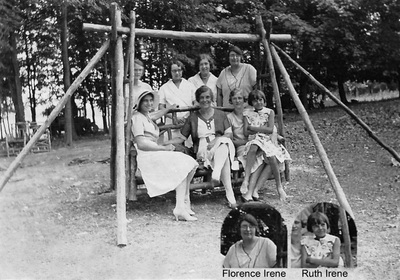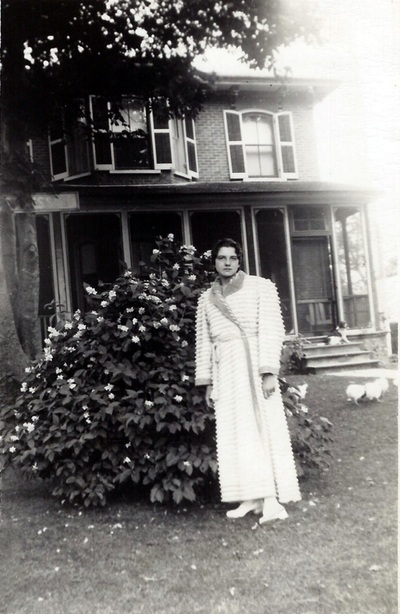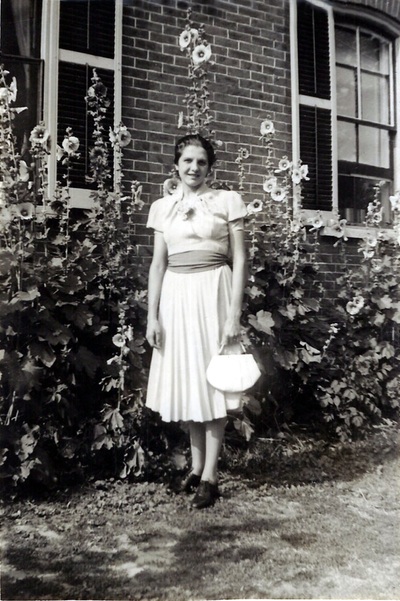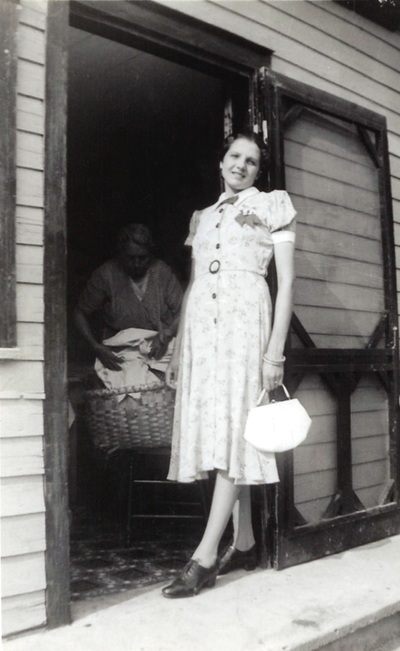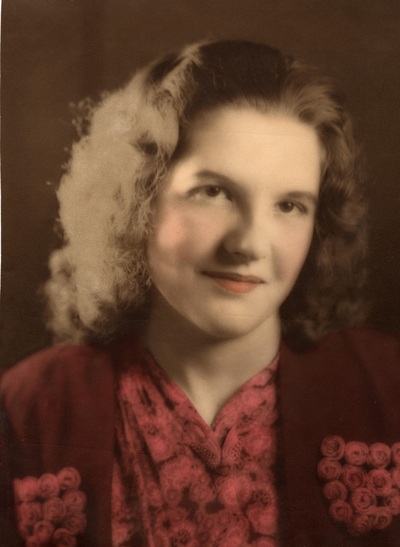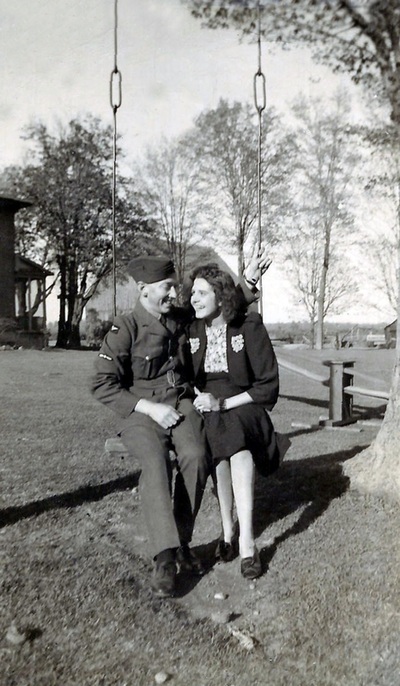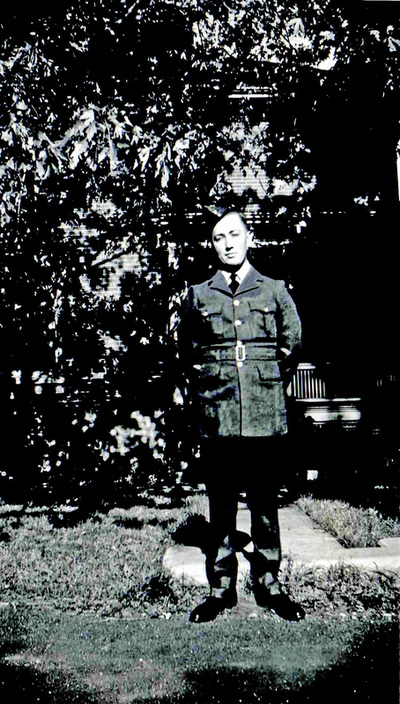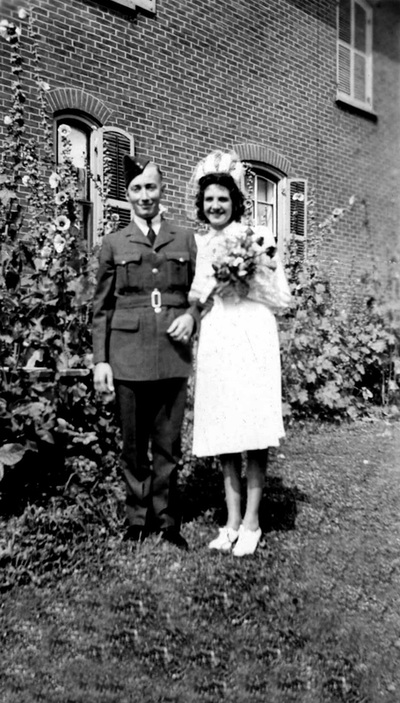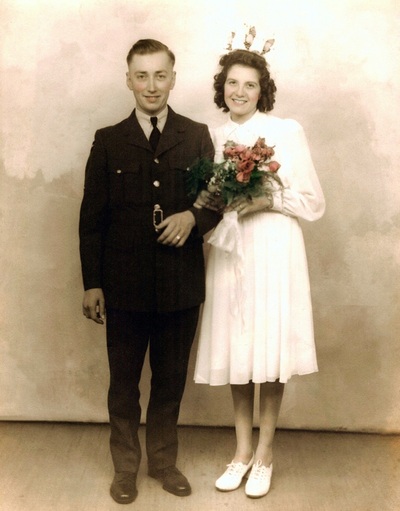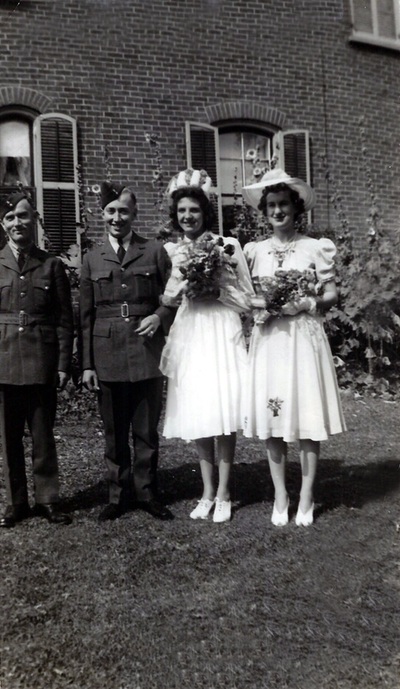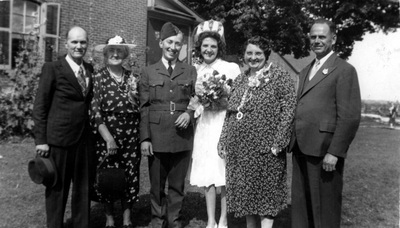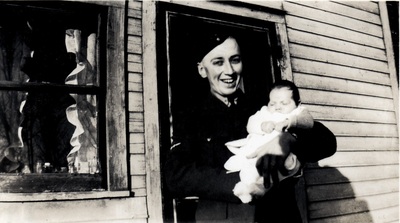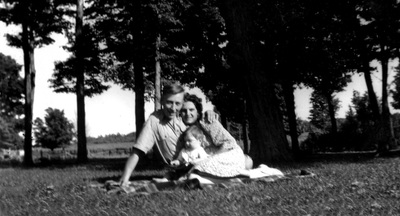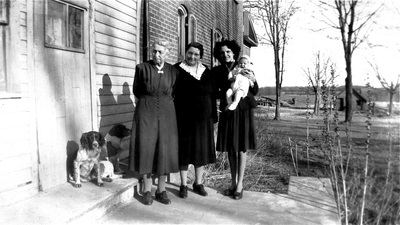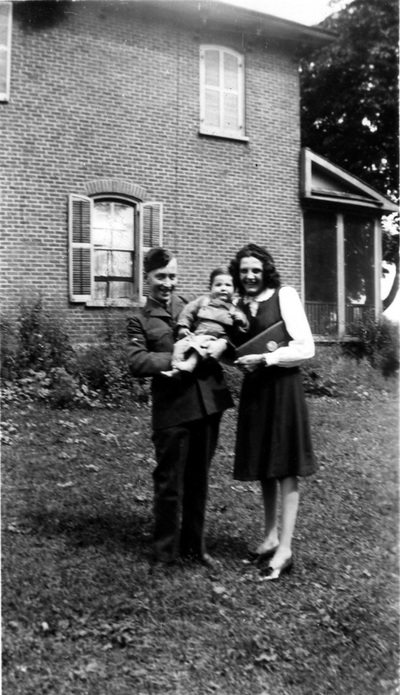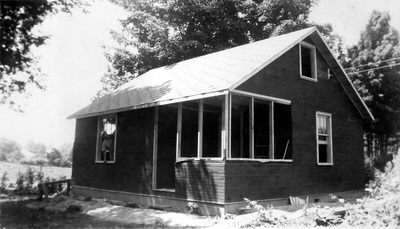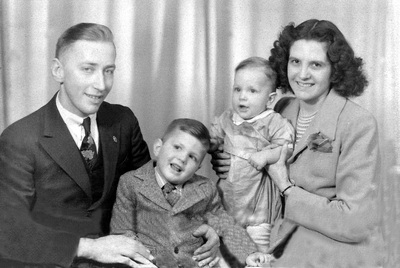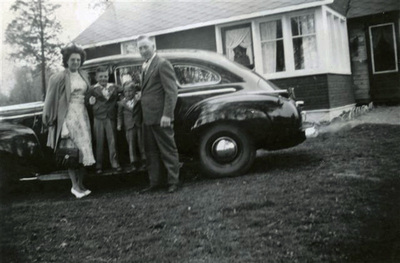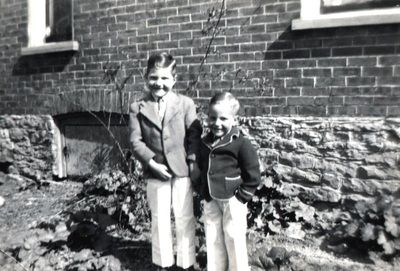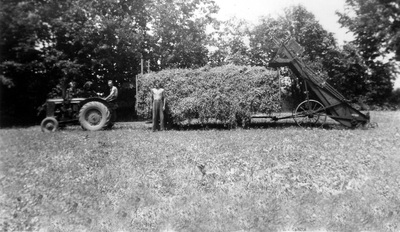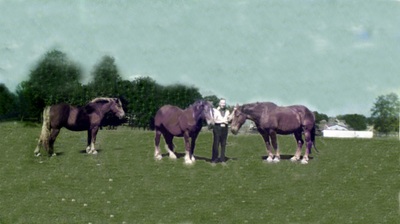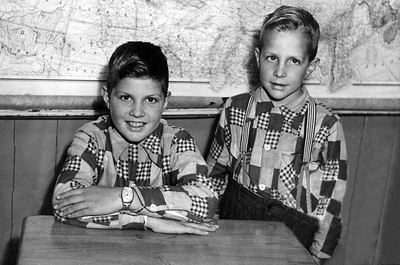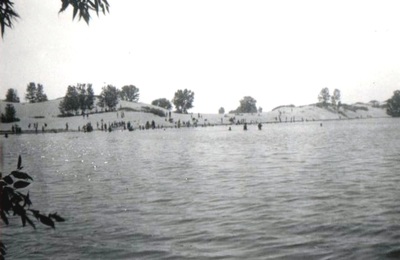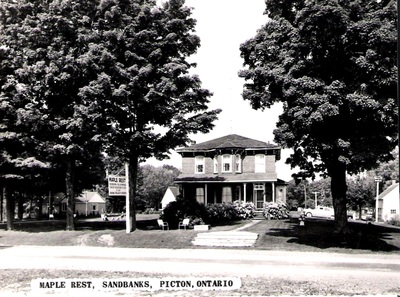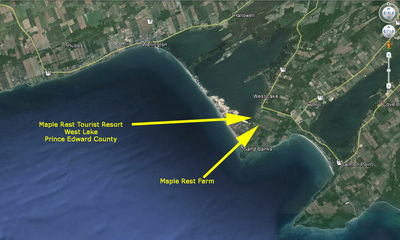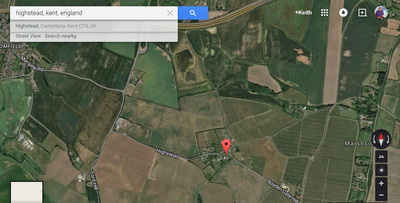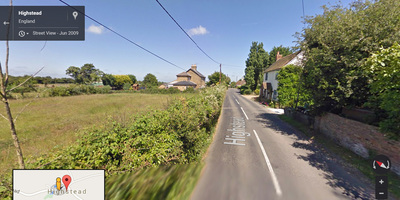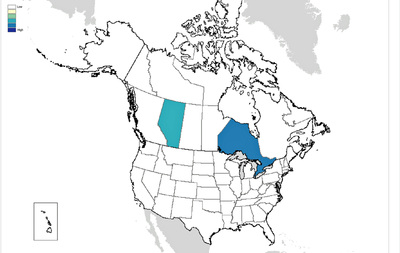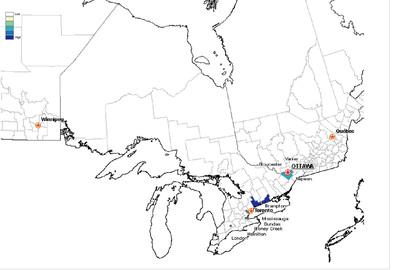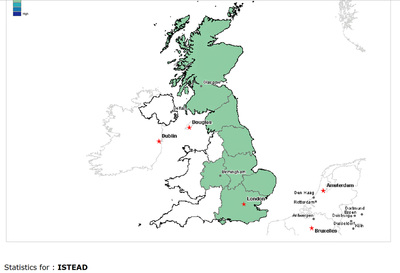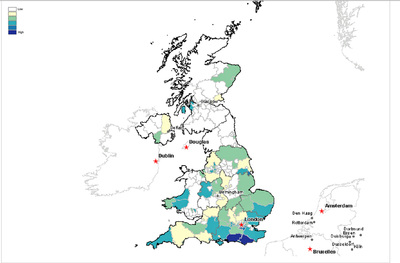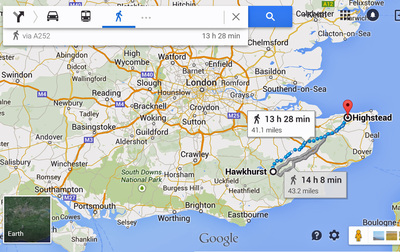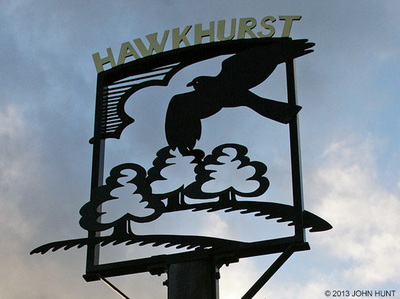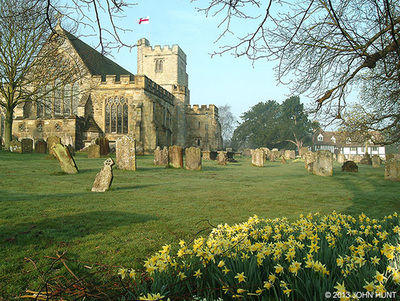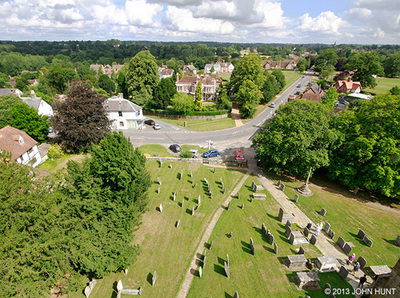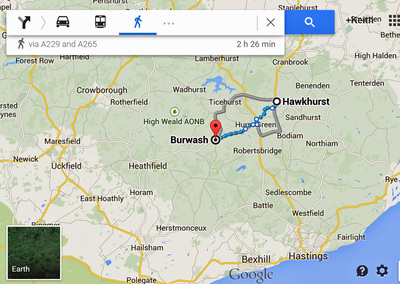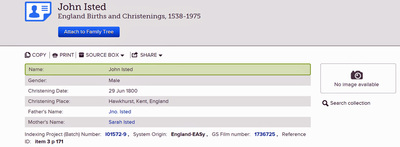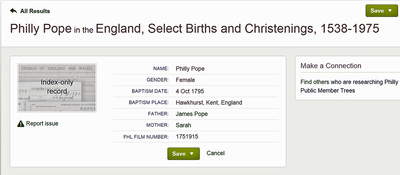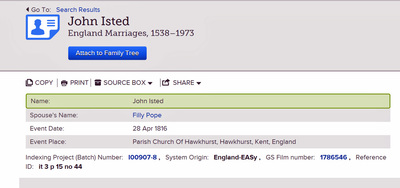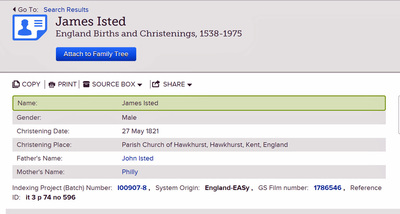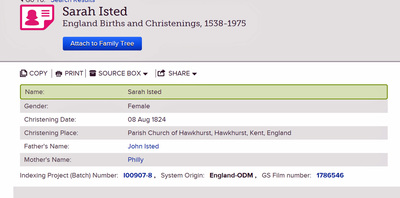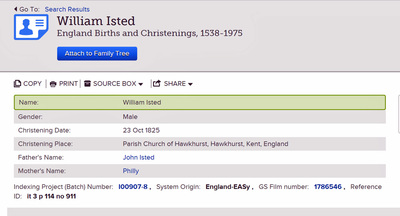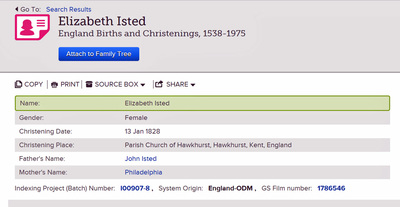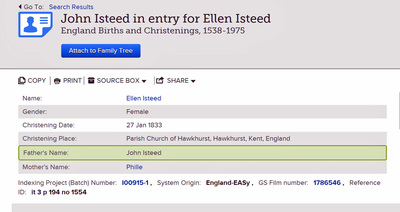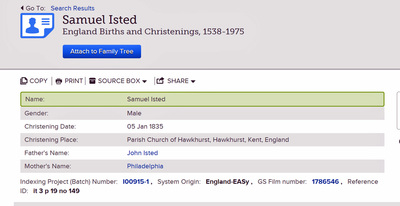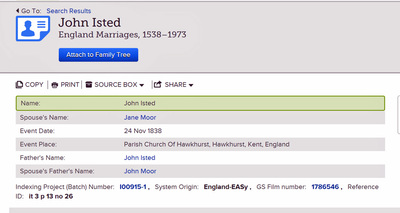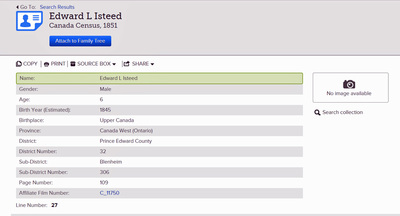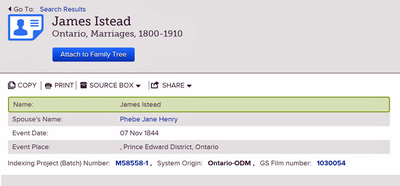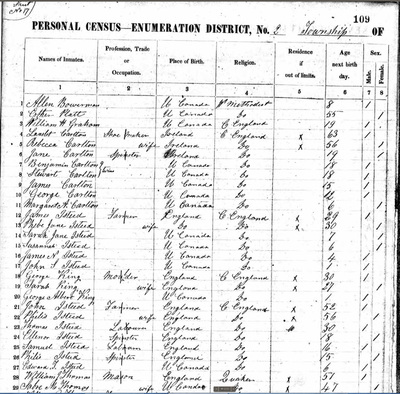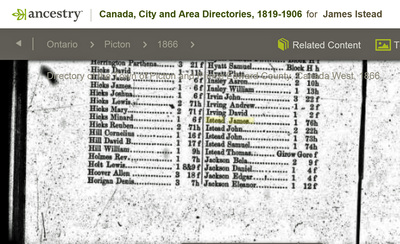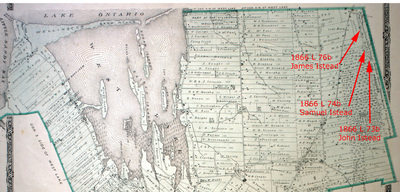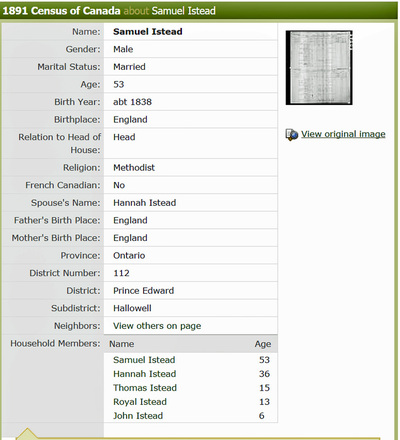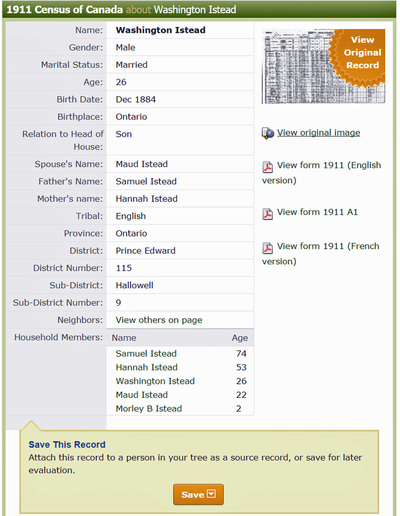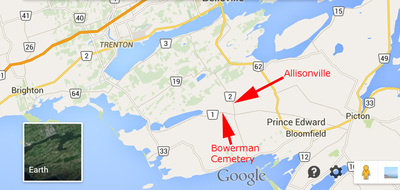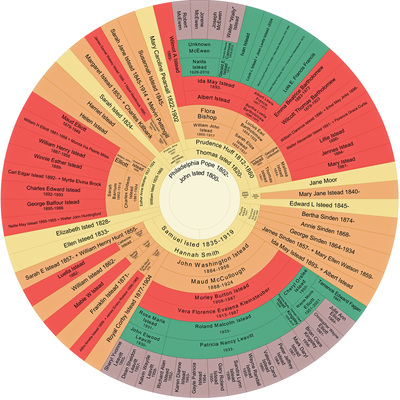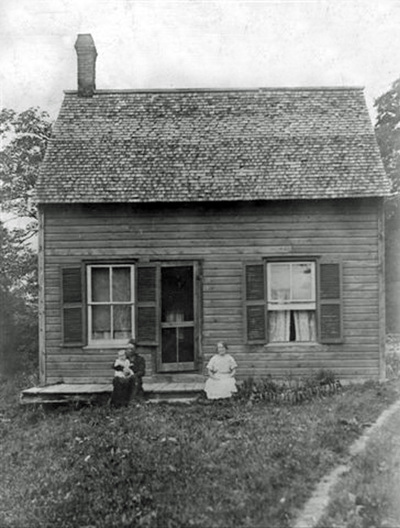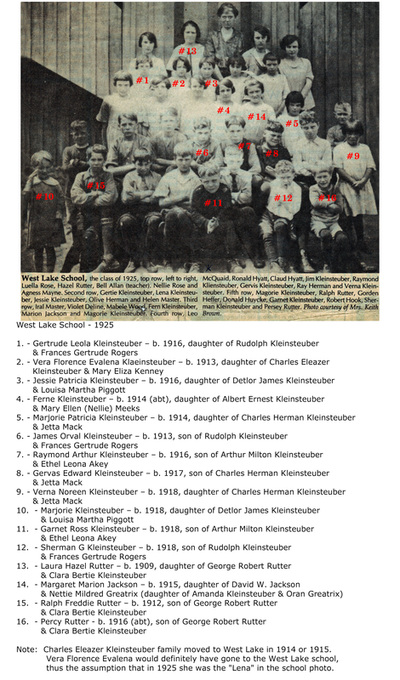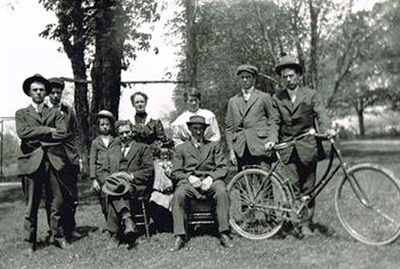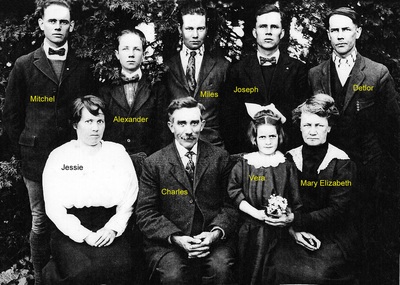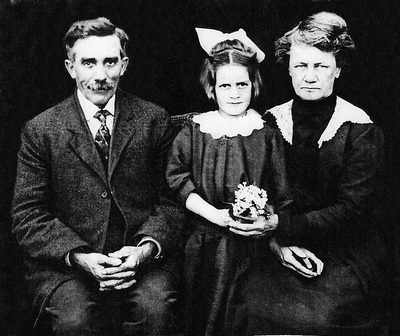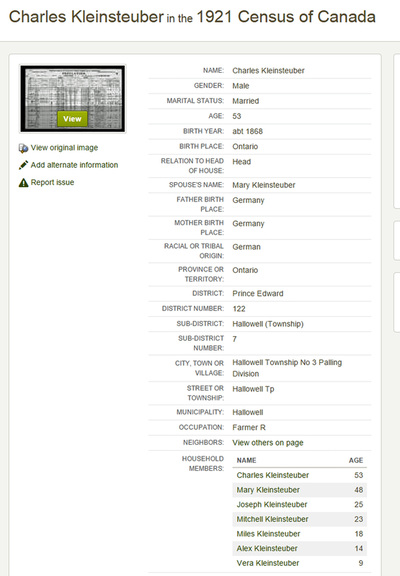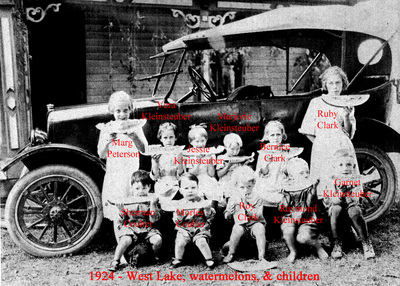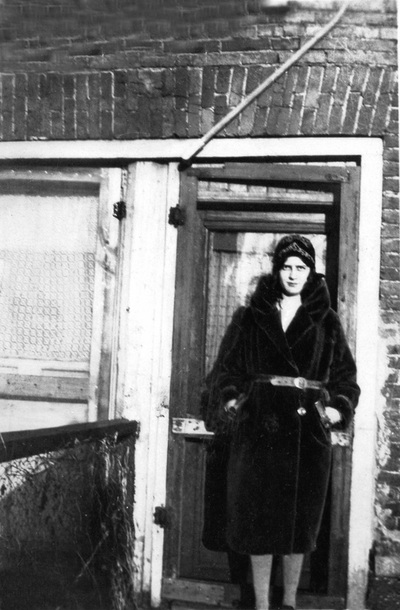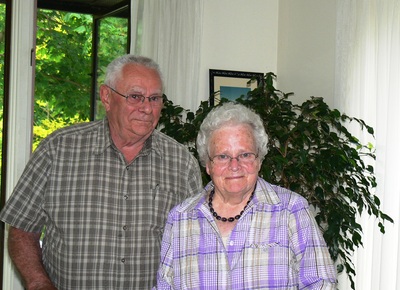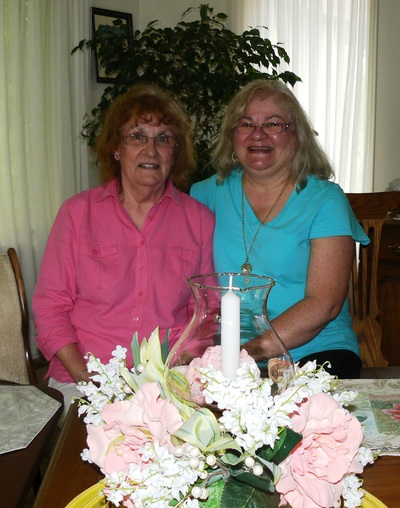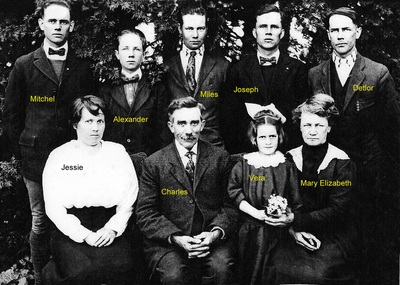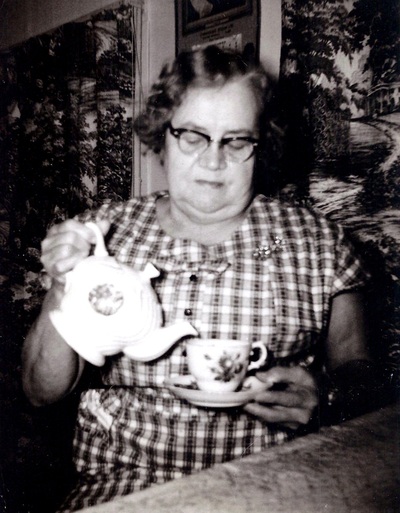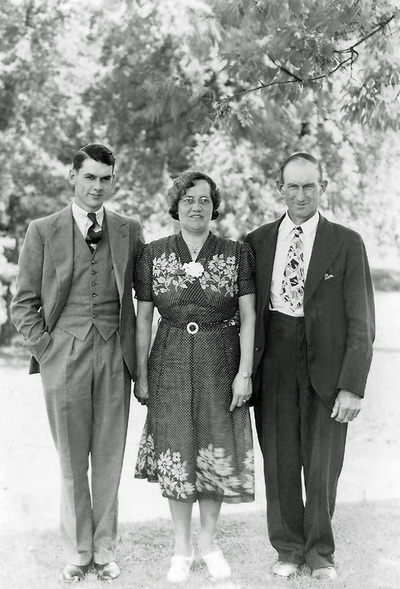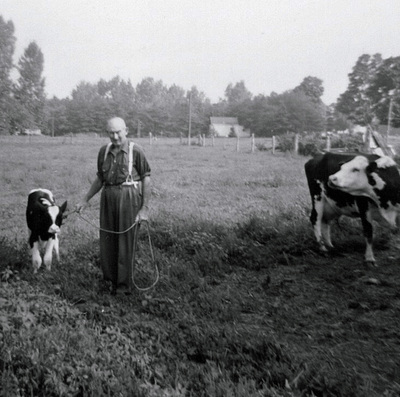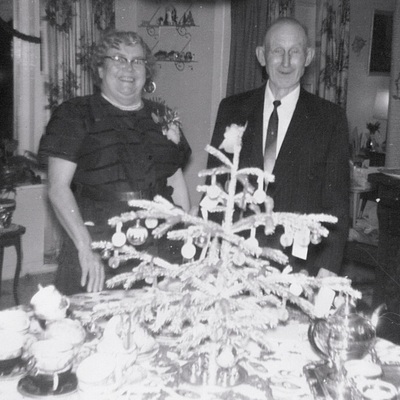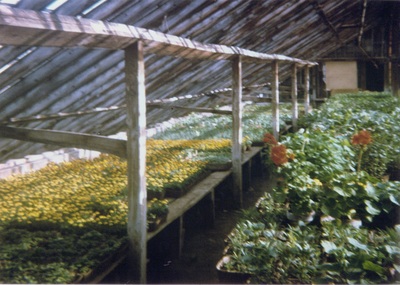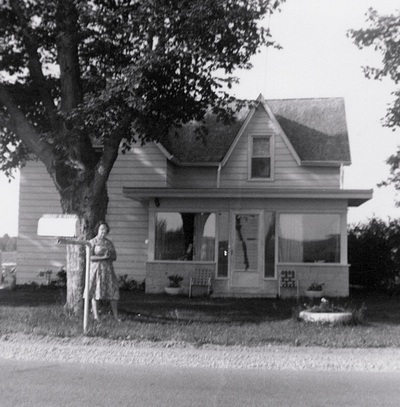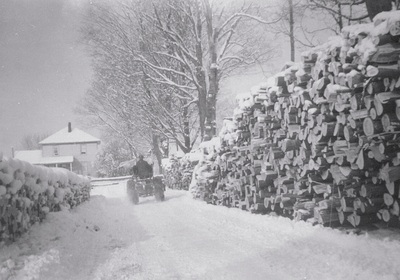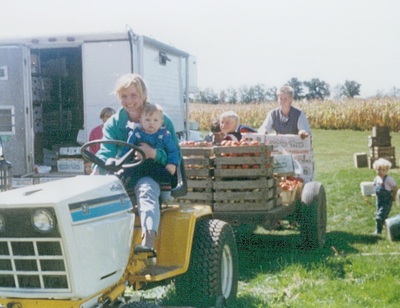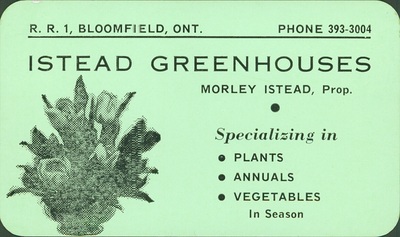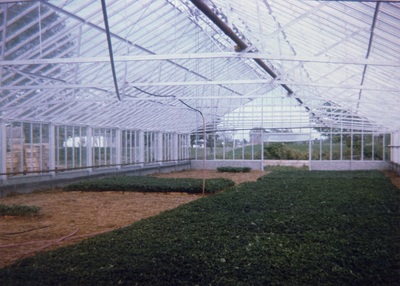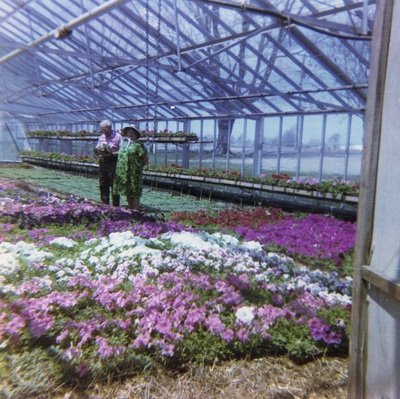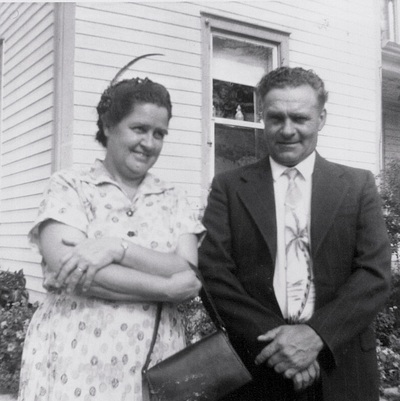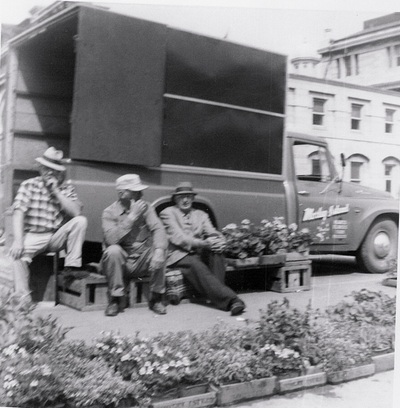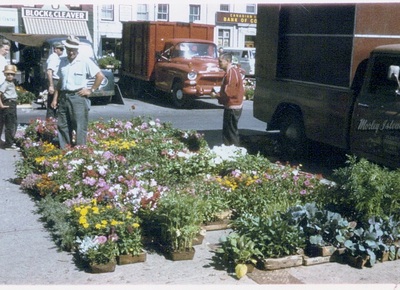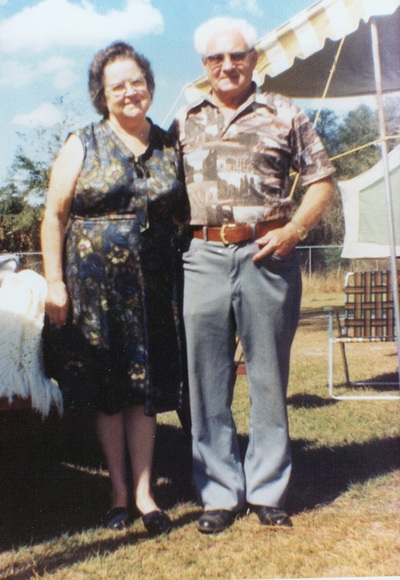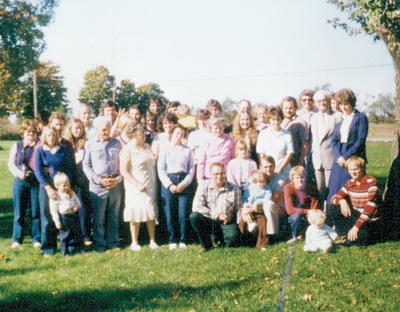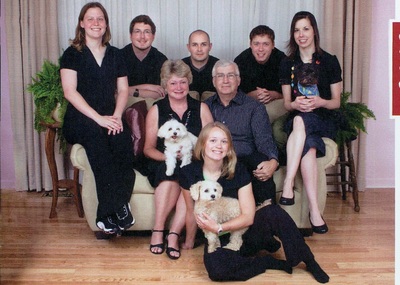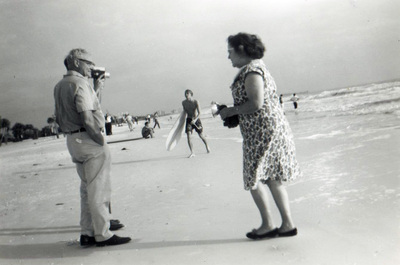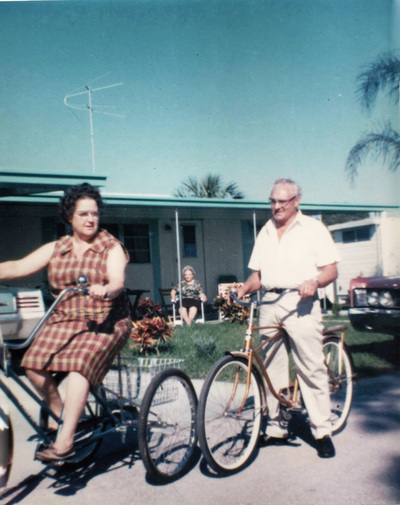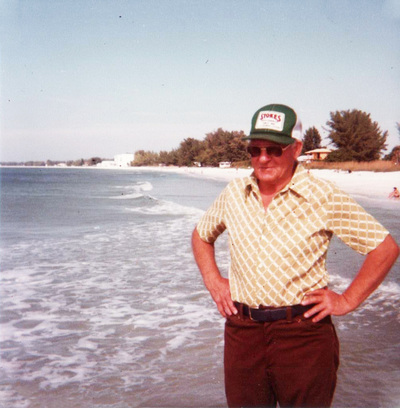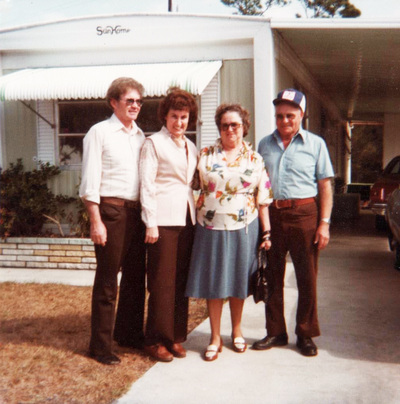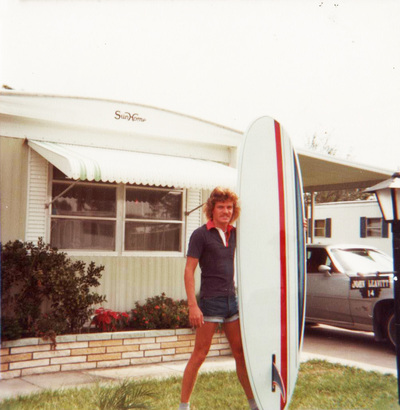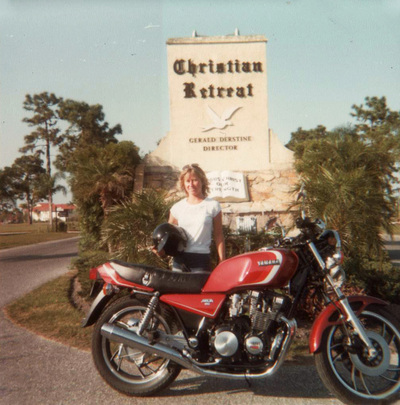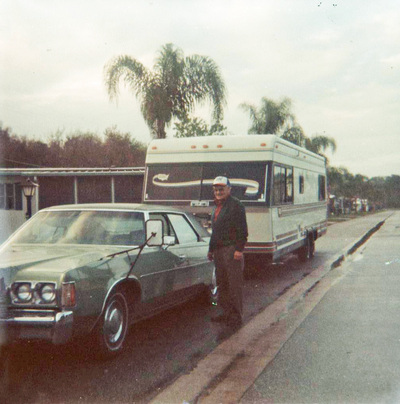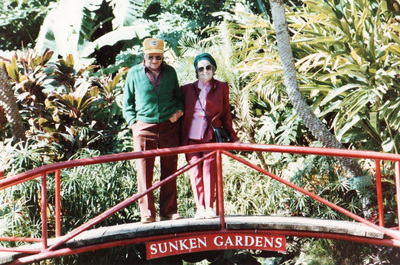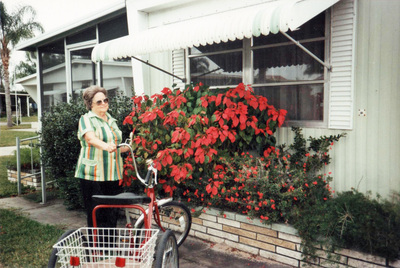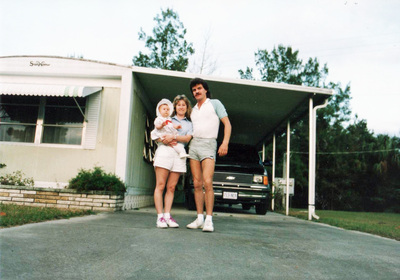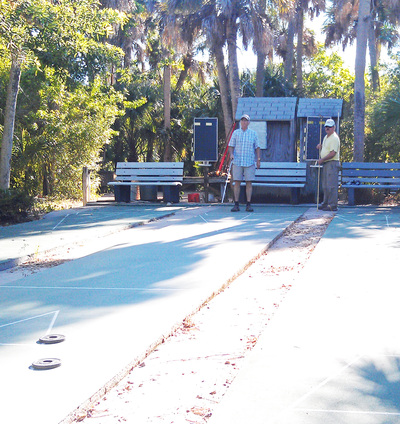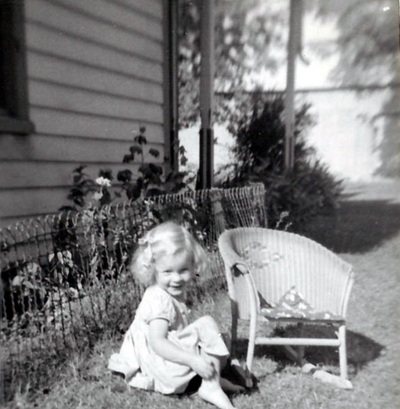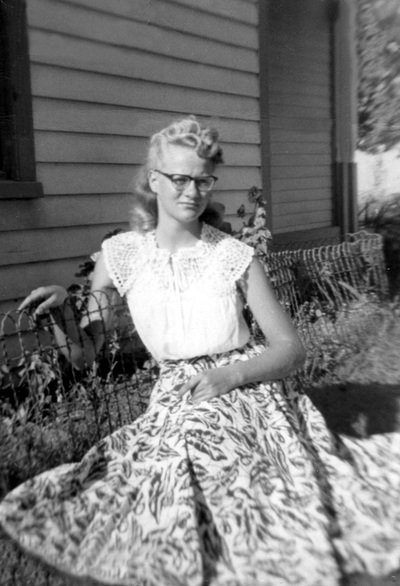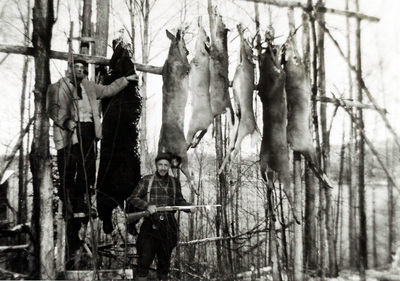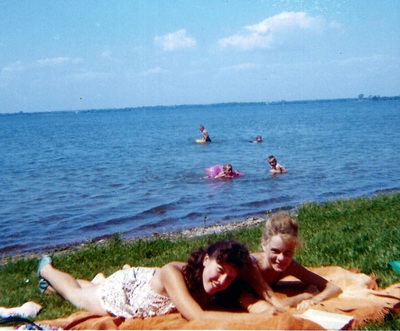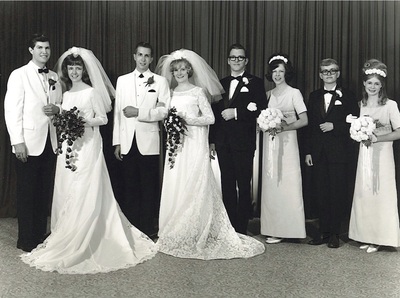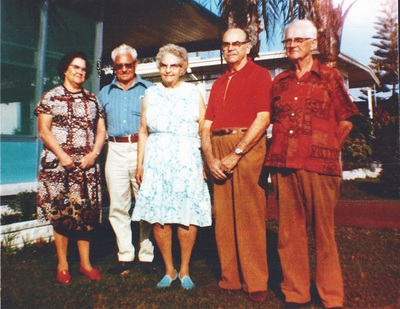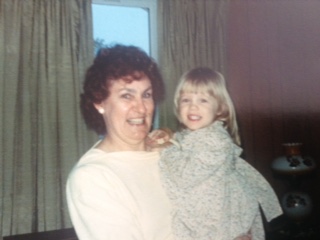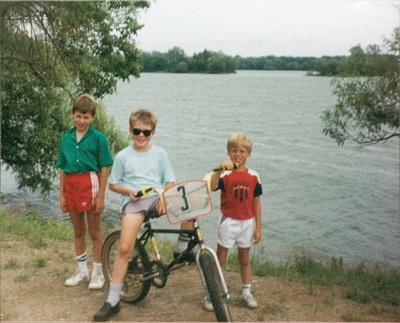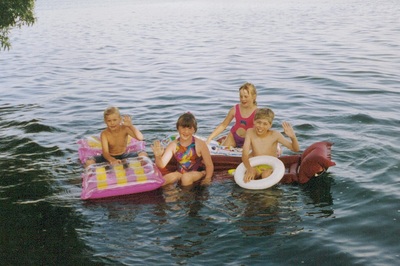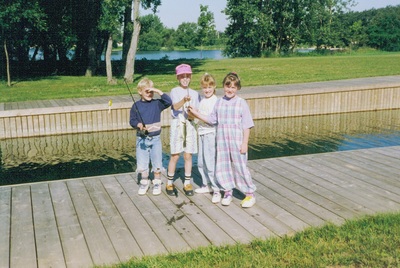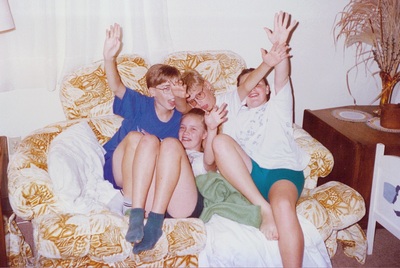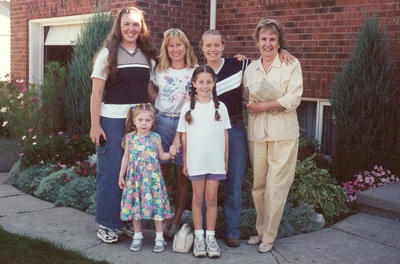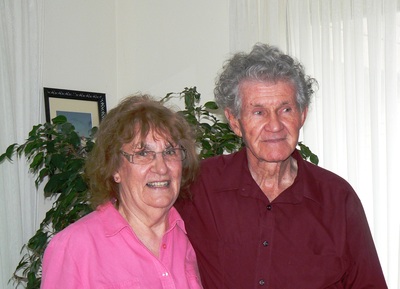Author: Marlene Rodgers, in collaboration with Keith Millard
Note: The author is a direct descendant of William Rogers, Sr.
Early Rodgers/Rogers Family History:
This family history really begins with William Rogers, born circa 1681 in Albany, Dutchess County, New York Province, our earliest known ancestor of this story.
These Rodgers men were hailing from farmers or soldiers seeking new homes in a new world like many other families who immigrated from European countries to what we know as North America today. They mainly settled in the New York Province area and later immigrated to Upper Canada. They married into many European families that came to the New World seeking the same thing. Either freedom of religion, or speech, or "that" new adventure that most young men suffer from in their early years.
William Rogers Sr. (sometimes Rodgers) was a soldier in one of the companies on garrison duty at Albany and on the northern frontier. William was the first of several individuals named William Rogers who lived in Albany, almost continuously over most of the eighteenth century. This individual (Albany's first William Rogers) was known as "William Rogers, Sr."
In July 17, 1706, "William Rogers" married a Mary Johnson of Boston at his home in Albany. The marriage was recorded in the register of the Albany Dutch church. At that time, he was identified as a soldier in "Captain Weemes' Company." By 1709, three children had been christened in Albany. Perhaps, his first wife died and, in February 1721, he married Susanna De Foreest.
Over at least two decades, William Rogers was a paid soldier on duty out of Albany. As early as November 1697, he was identified as a private in Richard Ingoldsby's company and was paid thru May 1698. In September 1698, he was identified as a private and on the payroll of Capt. Baxter's company at Albany. In May 1710, he obtained his discharge from James Weems' company of fuziliers as his term of service had expired, by that time, he had become an Albany resident.
In 1709, his third ward holdings were valued on the Albany assessment roll. William seem to wear many hats in 1713, he was appointed high constable, 1714 he was appointed fire master for the third ward and he subscribed for the building of St. Peter's Anglican Church. At that time, he was identified as a "hattor."
William Rogers and Mary Johnson had 3 children 2 daughters who died young and a son named William Jr. who was born in Albany, Dutchess Co., New York Province on 4 December, 1709 and grew up in what was called a hatter's home in the third ward of Albany.
In February 1738, "William Rodgers, Jr." married Mary Wieth or White at the Albany Dutch church. Later, he was a member and church warden at St. Peter's Anglican church. In 1765, he joined the minister in petitioning the city council for land on which to build a parsonage.
Mary Wieth died about 1748 leaving behind 3 young children and William Jr. married again in Oct 1749 to a Mary VerVeelen. Their youngest son Gideon was born Abt. 1754.
However, in June 1777, William was among those "prisoners" who took the oath of allegiance and was discharged. In May 1787, a William Rogers (turning seventy, a resident of Hoosic and a yeoman, and a former resident of Albany - with a large family), was a convicted horse thief. "Destitute," he petitioned the governor for mercy and relief but passed shortly thereafter.
William Jr. was executed by American Rebels in Albany in 1787. Papers of Gov. George Clinton.
William Rodgers, Jr has 534 Descendants in our Geni Family Tree, click on the pdf file below to see 7 generations of descendants, each generation is a different colour.
Click on photos to enlarge, cursor over for caption, or click on Download File to Open the pdf files:
Note: The author is a direct descendant of William Rogers, Sr.
Early Rodgers/Rogers Family History:
This family history really begins with William Rogers, born circa 1681 in Albany, Dutchess County, New York Province, our earliest known ancestor of this story.
These Rodgers men were hailing from farmers or soldiers seeking new homes in a new world like many other families who immigrated from European countries to what we know as North America today. They mainly settled in the New York Province area and later immigrated to Upper Canada. They married into many European families that came to the New World seeking the same thing. Either freedom of religion, or speech, or "that" new adventure that most young men suffer from in their early years.
William Rogers Sr. (sometimes Rodgers) was a soldier in one of the companies on garrison duty at Albany and on the northern frontier. William was the first of several individuals named William Rogers who lived in Albany, almost continuously over most of the eighteenth century. This individual (Albany's first William Rogers) was known as "William Rogers, Sr."
In July 17, 1706, "William Rogers" married a Mary Johnson of Boston at his home in Albany. The marriage was recorded in the register of the Albany Dutch church. At that time, he was identified as a soldier in "Captain Weemes' Company." By 1709, three children had been christened in Albany. Perhaps, his first wife died and, in February 1721, he married Susanna De Foreest.
Over at least two decades, William Rogers was a paid soldier on duty out of Albany. As early as November 1697, he was identified as a private in Richard Ingoldsby's company and was paid thru May 1698. In September 1698, he was identified as a private and on the payroll of Capt. Baxter's company at Albany. In May 1710, he obtained his discharge from James Weems' company of fuziliers as his term of service had expired, by that time, he had become an Albany resident.
In 1709, his third ward holdings were valued on the Albany assessment roll. William seem to wear many hats in 1713, he was appointed high constable, 1714 he was appointed fire master for the third ward and he subscribed for the building of St. Peter's Anglican Church. At that time, he was identified as a "hattor."
William Rogers and Mary Johnson had 3 children 2 daughters who died young and a son named William Jr. who was born in Albany, Dutchess Co., New York Province on 4 December, 1709 and grew up in what was called a hatter's home in the third ward of Albany.
In February 1738, "William Rodgers, Jr." married Mary Wieth or White at the Albany Dutch church. Later, he was a member and church warden at St. Peter's Anglican church. In 1765, he joined the minister in petitioning the city council for land on which to build a parsonage.
Mary Wieth died about 1748 leaving behind 3 young children and William Jr. married again in Oct 1749 to a Mary VerVeelen. Their youngest son Gideon was born Abt. 1754.
However, in June 1777, William was among those "prisoners" who took the oath of allegiance and was discharged. In May 1787, a William Rogers (turning seventy, a resident of Hoosic and a yeoman, and a former resident of Albany - with a large family), was a convicted horse thief. "Destitute," he petitioned the governor for mercy and relief but passed shortly thereafter.
William Jr. was executed by American Rebels in Albany in 1787. Papers of Gov. George Clinton.
William Rodgers, Jr has 534 Descendants in our Geni Family Tree, click on the pdf file below to see 7 generations of descendants, each generation is a different colour.
Click on photos to enlarge, cursor over for caption, or click on Download File to Open the pdf files:
| | |
| ||
| united_empire_loyalists.pdf |
James Matthew Rogers & Jane Lindsay Family:
Gideon Rodgers immigrated to Upper Canada in about 1795, as his youngest child Magdalena was born in Fredericksburg, Lennox/Addington Co., in 1796. This writer’s 4th great-grandfather James Matthew Rodgers was Gideon & Rachel VanZuylen youngest son and the last to be born in New York Province.
James Matthew Rodgers, son of Gideon Rodgers and Rachel Van Zuylen was born on 19 Mar 1794 in Poughkeepsie, Dutchess Co., New York Province was christened on 21 Mar 1794 in Poughkeepsie, Dutchess Co., New York Province, and died on 1 Feb 1883 in Hungerford Twp., Hastings Co., Ontario at age 88.
Gideon Rodgers immigrated to Upper Canada in about 1795, as his youngest child Magdalena was born in Fredericksburg, Lennox/Addington Co., in 1796. This writer’s 4th great-grandfather James Matthew Rodgers was Gideon & Rachel VanZuylen youngest son and the last to be born in New York Province.
James Matthew Rodgers, son of Gideon Rodgers and Rachel Van Zuylen was born on 19 Mar 1794 in Poughkeepsie, Dutchess Co., New York Province was christened on 21 Mar 1794 in Poughkeepsie, Dutchess Co., New York Province, and died on 1 Feb 1883 in Hungerford Twp., Hastings Co., Ontario at age 88.
So it seems that the Rodgers/Rogers descendants grew from this pioneer/soldier stock by marrying into such Loyalist families as Wager, Pringle, Smith, Youmans and Lindsay.
Jane Lindsay was born 24 Feb, 1801 the daughter of Loyalist James Lindsay UEL and Anna Hannah Wager DUE and was christened on 4 Oct 1807 in Ernestown, Lennox/Addington Co., sponsors: David Scot, Bryan Gready and died on 13 Feb 1877 at age 76.
Some interesting notes about Jane Lindsay Rogers is that she applied for land grants as a daughter of a Loyalist. In the Gallery below is an Upper Canada Land Petition R12/153, dated 1819 which Jane was granted land which her brother in law William Rogers gave testimony as to the validation of her rights to apply.
Note: that Jane made her mark and someone signed her names for her as a witness.
Jane Rogers of Marysburg, daughter of James Lindsay of Thurlow Twp., and wife of James Rogers, is asking for land. In this petition, there is also a statement by William Rogers that Jane is his brother's wife.
ABSTRACTS OF UPPER CANADA LAND PETITIONS - Appendix "A";
Petition of Jane Rogers of the Township of Marysburg in the Midland District, wife of James Rogers, humbly sheweth that Your Petitioner is the daughter of James Lindsay of the Township of Thurlow in the Midland District, a U.E. Loyalist, that your Petitioner is married to the above-named James Rogers and has never received any land or order for land from the Crown. Your Petitioner prays that Your Excellency will be pleased to grant her 200 acres of the waste lands of the Crown and permit William Rogers to locate same and take out the deed when completed. And as in duty bound will ever pray, her Jane X Rogers mark Adolphustown, 26 Jan 1819.
I do certify that Jane Rogers is my brother's wife and that she was alive and well in Marysburg about 3 weeks ago. Signed: William X Rogers at York 14 Dec 1819.
James & Jane Rodgers had 11 children 6 sons & 5 daughters all born in Tyendinaga, Thurlow Twp., Hastings Co., Upper Canada. In 1869 he was shown as owner of property at Concession 11, Lot 8 in Hungerford Township.
Jane Lindsay was born 24 Feb, 1801 the daughter of Loyalist James Lindsay UEL and Anna Hannah Wager DUE and was christened on 4 Oct 1807 in Ernestown, Lennox/Addington Co., sponsors: David Scot, Bryan Gready and died on 13 Feb 1877 at age 76.
Some interesting notes about Jane Lindsay Rogers is that she applied for land grants as a daughter of a Loyalist. In the Gallery below is an Upper Canada Land Petition R12/153, dated 1819 which Jane was granted land which her brother in law William Rogers gave testimony as to the validation of her rights to apply.
Note: that Jane made her mark and someone signed her names for her as a witness.
Jane Rogers of Marysburg, daughter of James Lindsay of Thurlow Twp., and wife of James Rogers, is asking for land. In this petition, there is also a statement by William Rogers that Jane is his brother's wife.
ABSTRACTS OF UPPER CANADA LAND PETITIONS - Appendix "A";
Petition of Jane Rogers of the Township of Marysburg in the Midland District, wife of James Rogers, humbly sheweth that Your Petitioner is the daughter of James Lindsay of the Township of Thurlow in the Midland District, a U.E. Loyalist, that your Petitioner is married to the above-named James Rogers and has never received any land or order for land from the Crown. Your Petitioner prays that Your Excellency will be pleased to grant her 200 acres of the waste lands of the Crown and permit William Rogers to locate same and take out the deed when completed. And as in duty bound will ever pray, her Jane X Rogers mark Adolphustown, 26 Jan 1819.
I do certify that Jane Rogers is my brother's wife and that she was alive and well in Marysburg about 3 weeks ago. Signed: William X Rogers at York 14 Dec 1819.
James & Jane Rodgers had 11 children 6 sons & 5 daughters all born in Tyendinaga, Thurlow Twp., Hastings Co., Upper Canada. In 1869 he was shown as owner of property at Concession 11, Lot 8 in Hungerford Township.
Bogart is a tiny settlement in the municipality of Tweed, Hastings County, Ontario located about 2.3 kilometres (1.4 mi) south of the community of Sulphide and 5.3 kilometres (3.3 mi) east of the village of Tweed. The Clare River, a tributary of the Moira River, flows through the community and takes its rise in divisions upon the eastern boundary, upon which is situated Bogart's mills and empties itself into Stoco Lake at its eastern extremity.
From the 1876 Atlas of Ontario;
It is impossible to fully realize the hardships, privations and sufferings of these first settlers of Hungerford. In the midst of an immense forest, without society, far removed from villages where anything could be purchased, and oftentimes destitute of the means to purchase; with twenty miles of almost impassable roads to travel before a grist mill or a store could be reached, a journey, with ox teams, occupying six or seven days. In a sickly country, where fever and ague was the common lot of nearly everyone, and no physicians near, the wolf without and sometimes the wolf of hunger within, all conspired to try the stoutest heart. The little produce raised could find no market, as there were no transportation facilities, and each settler supplied his own wants. As a result, little money was in circulation, all groceries were paid for in produce at extremely low rates, as the store keeper must find a market over nearly impassable roads. Such were among the trials and experiences of the early settlers of this township and for years the permanent hindrance to its increase in population, values and property.
1871 Census E. Hastings - C-9993 61-C-3, pg 33, line 11;
Shows James & Jane living with their youngest son William and his wife Elizabeth Glenn
Rodgers, William .............37 Ont. W. Meth. Irish Farmer
Elizabeth ........................29 Que.
John Wesley ...................12 Ont.
William Henry. ................09 Ont.
James, Sr. . ....................76 US E. Meth Irish Farmer
Jane . . . . . ....................64 Ont. " Scot.
First All Canadian Generation of Rodgers/Rogers Family:
Let’s have a look at James & Jane’s 10 children, some of whom seem to have the most interesting or soap opera like stories to tell.
Matthew Patrick Rodgers & Lucinda Ann Thompson:
First there is the eldest of James & Jane’s children Matthew Patrick, this writer’s 3rd great-grandfather.
Matthew Patrick married Lucinda Ann Thompson on 12 May 1839 in Kingston, Frontenac County, Upper Canada. Lucinda Ann was born on 20 Sep 1817 in Kingston, Frontenac County, Upper Canada and died on 30 Mar 1901 at age 83.
Matthew was a member of the 4th Incorporated Militia but he mainly was a farmer. Matthew & Lucinda had 8 children 5 sons & 3 daughters, the first 4 children were born in Denbigh, Lennox/Addington Co., and the last 4 were born in Tweed, Hastings Co., Hungerford Twp., Samuel James was their 2nd child and it is thru his marriage to Hannah Youmans that our Rodgers/Rogers line crossed into the Kleinsteuber family..
Matthew lived with his son Samuel James and his 2nd wife Cassie Stuffles after Lucinda Ann passed in 1901. Matthew died on 6 July 1904 of old age.
Click on photos to enlarge, cursor over for caption:
From the 1876 Atlas of Ontario;
It is impossible to fully realize the hardships, privations and sufferings of these first settlers of Hungerford. In the midst of an immense forest, without society, far removed from villages where anything could be purchased, and oftentimes destitute of the means to purchase; with twenty miles of almost impassable roads to travel before a grist mill or a store could be reached, a journey, with ox teams, occupying six or seven days. In a sickly country, where fever and ague was the common lot of nearly everyone, and no physicians near, the wolf without and sometimes the wolf of hunger within, all conspired to try the stoutest heart. The little produce raised could find no market, as there were no transportation facilities, and each settler supplied his own wants. As a result, little money was in circulation, all groceries were paid for in produce at extremely low rates, as the store keeper must find a market over nearly impassable roads. Such were among the trials and experiences of the early settlers of this township and for years the permanent hindrance to its increase in population, values and property.
1871 Census E. Hastings - C-9993 61-C-3, pg 33, line 11;
Shows James & Jane living with their youngest son William and his wife Elizabeth Glenn
Rodgers, William .............37 Ont. W. Meth. Irish Farmer
Elizabeth ........................29 Que.
John Wesley ...................12 Ont.
William Henry. ................09 Ont.
James, Sr. . ....................76 US E. Meth Irish Farmer
Jane . . . . . ....................64 Ont. " Scot.
First All Canadian Generation of Rodgers/Rogers Family:
Let’s have a look at James & Jane’s 10 children, some of whom seem to have the most interesting or soap opera like stories to tell.
Matthew Patrick Rodgers & Lucinda Ann Thompson:
First there is the eldest of James & Jane’s children Matthew Patrick, this writer’s 3rd great-grandfather.
Matthew Patrick married Lucinda Ann Thompson on 12 May 1839 in Kingston, Frontenac County, Upper Canada. Lucinda Ann was born on 20 Sep 1817 in Kingston, Frontenac County, Upper Canada and died on 30 Mar 1901 at age 83.
Matthew was a member of the 4th Incorporated Militia but he mainly was a farmer. Matthew & Lucinda had 8 children 5 sons & 3 daughters, the first 4 children were born in Denbigh, Lennox/Addington Co., and the last 4 were born in Tweed, Hastings Co., Hungerford Twp., Samuel James was their 2nd child and it is thru his marriage to Hannah Youmans that our Rodgers/Rogers line crossed into the Kleinsteuber family..
Matthew lived with his son Samuel James and his 2nd wife Cassie Stuffles after Lucinda Ann passed in 1901. Matthew died on 6 July 1904 of old age.
Click on photos to enlarge, cursor over for caption:
Hannah W Louise Rodgers;
Hannah was the 2nd child of James Rodgers & Jane Lindsay, let’s see what events their first daughter and 2nd child Hannah W was up to. Hannah was born June 23, 1819 in Tyendinaga, Thurlow Twp., Hastings Co., Upper Canada.
Not much is known about Hannah, she married a James Stuffles in June 22 1836 in S Marysburg Twp., Prince Edward Co., Upper Canada, the marriage was witnessed by Matthew C. Rogers and Elizabeth Simerman.
Hannah & James had a family of 8 children bringing them up in S Marysburg Twp., Prince Edward Co., Hannah died at a relatively young age of 42, she and James were living in Athol Twp., Prince Edward Co., Canada West in the 1861 census when she died in August 1861. See 1861 census and 1838 marriage record below.
Click on photos to enlarge, cursor over for caption:
Hannah was the 2nd child of James Rodgers & Jane Lindsay, let’s see what events their first daughter and 2nd child Hannah W was up to. Hannah was born June 23, 1819 in Tyendinaga, Thurlow Twp., Hastings Co., Upper Canada.
Not much is known about Hannah, she married a James Stuffles in June 22 1836 in S Marysburg Twp., Prince Edward Co., Upper Canada, the marriage was witnessed by Matthew C. Rogers and Elizabeth Simerman.
Hannah & James had a family of 8 children bringing them up in S Marysburg Twp., Prince Edward Co., Hannah died at a relatively young age of 42, she and James were living in Athol Twp., Prince Edward Co., Canada West in the 1861 census when she died in August 1861. See 1861 census and 1838 marriage record below.
Click on photos to enlarge, cursor over for caption:
Ephriam L Rodgers;
The next or 3rd child of James & Jane Rodgers was Ephriam L Rodgers who was born 14 September 1821 and died 14 October 1855. Ephriam L married Mary Elizabeth Lindsay, born about 1825, and who died of old age on 26 July, 1905. They married on 25 Apr, 1844 in Tweed, Hastings Co., Hungerford Twp., Canada West. Mary Elizabeth was the daughter of Samuel & Mary Lindsay. Ephriam & Mary Elizabeth had 7 children all born in the Tweed area but lost a son, Alexander James Rodgers to small pox in the 1884 epidemic.
This disease spread throughout the area and touched many families. Ephriam and Mary Elizabeth’s family were amongst the many families that lost family members, sometimes an entire family was wiped out from the dreaded disease. You will see the death record below that shows so many family members who died within days of each other from small pox.
Click on photos to enlarge, cursor over for caption:
The next or 3rd child of James & Jane Rodgers was Ephriam L Rodgers who was born 14 September 1821 and died 14 October 1855. Ephriam L married Mary Elizabeth Lindsay, born about 1825, and who died of old age on 26 July, 1905. They married on 25 Apr, 1844 in Tweed, Hastings Co., Hungerford Twp., Canada West. Mary Elizabeth was the daughter of Samuel & Mary Lindsay. Ephriam & Mary Elizabeth had 7 children all born in the Tweed area but lost a son, Alexander James Rodgers to small pox in the 1884 epidemic.
This disease spread throughout the area and touched many families. Ephriam and Mary Elizabeth’s family were amongst the many families that lost family members, sometimes an entire family was wiped out from the dreaded disease. You will see the death record below that shows so many family members who died within days of each other from small pox.
Click on photos to enlarge, cursor over for caption:
James Andrew Rodgers and Catherine Lindsay:
James & Jane’s 3rd son and 4th child, James A Rodgers, married Catherine Lindsay somewhere about the early 1840’s and they had 2 son’s. Emory & Lonson James, there was a thought that James & Catherine may have had a daughter but I believe that this was in error, as in all the census records there is no record of a daughter Franny. James died in 1910, the 1871 Census record and the 1910 death record for James are shown below.
Click on photos to enlarge, cursor over for caption:
James & Jane’s 3rd son and 4th child, James A Rodgers, married Catherine Lindsay somewhere about the early 1840’s and they had 2 son’s. Emory & Lonson James, there was a thought that James & Catherine may have had a daughter but I believe that this was in error, as in all the census records there is no record of a daughter Franny. James died in 1910, the 1871 Census record and the 1910 death record for James are shown below.
Click on photos to enlarge, cursor over for caption:
Sarah Jane Rodgers, Mary Jane Rodgers, & Samuel Ephriam Rodgers;
The 5th child of James Matthew Rogers & Jane Lindsay Rogers was Sarah Jane Rodgers born March 13, 1826 and died March 22, 1852 in Tweed, Hungerford Twp., Hastings Co. Sarah Jane married John Lindsay on August 08, 1838 in S Marysburg Twp., Prince Edward Co., Upper Canada. John was born about 1822 and died circa 1851 and was the son of John Lindsay UE and Mary Brants, John & Sarah Jane had 2 daughters that I know of. Very little is know about Sarah Jane Rodgers & John Lindsay as they died at a young and within a year of each other.
The 6th child of James & Jane’s was Mary Jane Rodgers born 12 Apr 1828 in Tweed, Hungerford Twp., Hastings Co., and died on 14 Mar 1899. Mary Jane married Andrew Henry Sinclair about 1847 in Tweed, Hungerford Twp., Hastings Co.; Andrew Henry Sinclair was born on 09 Sep 1830, the son of Henry Sinclair & Sarah Lindsay, and died 14 Mar 1899 in Dummer Twp., Peterborough Co., Ontario of Pneumonia at the age of 86.
Mary Jane & Andrew Sinclair had 7 children but 3 were taken in the small pox epidemic along with Mary Jane leaving Andrew with 4 children.
The 7th child of James & Jane was Samuel Ephriam Rodgers born on 20 Sep 1830 in Thurlow Twp., Hastings Co., Upper Canada and died 06 Apr 1866 in Tyendinaga, Thurlow Twp., Hastings Co., Ontario Canada. Samuel E married Mary Elizabeth Lindsay on 25 Apr 1854 in Tweed, Hastings Co., Hungerford Twp., Canada West daughter of John Lindsay UE & Mary Brants. Samuel & Mary Elizabeth Rodgers had 4 children.
Tragedy hit the Rodgers family with the drowning of Samuel Ephriam Rodgers on Apr 6, 1866 in Denbigh, Lennox/Addington Co., his body was not found until May 8, 1866 and buried May 9, 1866. It is not known how or where he drowned. Possibly it was when going to the island for hay?
Click on photo to enlarge, cursor over for caption:
The 5th child of James Matthew Rogers & Jane Lindsay Rogers was Sarah Jane Rodgers born March 13, 1826 and died March 22, 1852 in Tweed, Hungerford Twp., Hastings Co. Sarah Jane married John Lindsay on August 08, 1838 in S Marysburg Twp., Prince Edward Co., Upper Canada. John was born about 1822 and died circa 1851 and was the son of John Lindsay UE and Mary Brants, John & Sarah Jane had 2 daughters that I know of. Very little is know about Sarah Jane Rodgers & John Lindsay as they died at a young and within a year of each other.
The 6th child of James & Jane’s was Mary Jane Rodgers born 12 Apr 1828 in Tweed, Hungerford Twp., Hastings Co., and died on 14 Mar 1899. Mary Jane married Andrew Henry Sinclair about 1847 in Tweed, Hungerford Twp., Hastings Co.; Andrew Henry Sinclair was born on 09 Sep 1830, the son of Henry Sinclair & Sarah Lindsay, and died 14 Mar 1899 in Dummer Twp., Peterborough Co., Ontario of Pneumonia at the age of 86.
Mary Jane & Andrew Sinclair had 7 children but 3 were taken in the small pox epidemic along with Mary Jane leaving Andrew with 4 children.
The 7th child of James & Jane was Samuel Ephriam Rodgers born on 20 Sep 1830 in Thurlow Twp., Hastings Co., Upper Canada and died 06 Apr 1866 in Tyendinaga, Thurlow Twp., Hastings Co., Ontario Canada. Samuel E married Mary Elizabeth Lindsay on 25 Apr 1854 in Tweed, Hastings Co., Hungerford Twp., Canada West daughter of John Lindsay UE & Mary Brants. Samuel & Mary Elizabeth Rodgers had 4 children.
Tragedy hit the Rodgers family with the drowning of Samuel Ephriam Rodgers on Apr 6, 1866 in Denbigh, Lennox/Addington Co., his body was not found until May 8, 1866 and buried May 9, 1866. It is not known how or where he drowned. Possibly it was when going to the island for hay?
Click on photo to enlarge, cursor over for caption:
William George Henry Rodgers;
The 8th child of James & Jane’s was William George Henry Rodgers born on June 04, 1833 in Tyendinaga, Thurlow Twp., Hastings Co., Upper Canada and died July 21, 1908 in Tyendinaga, Thurlow Twp., Hastings Co., Ontario Canada by taking his own life.
William George Rodgers lost his son John Wesley 23 Feb 1893; son Sandy James 6 Nov 1903, and his wife Elizabeth on 17 Oct 1907. These losses were too much for him and he committed suicide by hanging on July 21 1908 at his residence: C-9 Lot-17. Death registered July 23 1908.
We find James and Jane Rodgers living with William George and his wife Elizabeth Glenn and children in the 1871 census and James as a widower in 1881 census.
Census E. Hastings - C-9993 - 61-C-3, p33 C-13238 - 120-C-2, p57
1871 line 11 1881 line 16
Rodgers, William . . .. . 37 . . . . . . . . 47 Farmer
Elizabeth. ............... . . 29 . . . . . . . . 39
John Wesley............... 12 . . . . . .. . . 22 Blacksmith
Wm. Henry ................. 9 . . . . . . . . . 19 Farmer
Sandy James . . . . . … . 5…
James Matthew, Sr. . . 76 . . . .. . . . . 86 Widower
Jane Lindsay .............. 64.........../
Click on photos to enlarge, cursor over for caption:
The 8th child of James & Jane’s was William George Henry Rodgers born on June 04, 1833 in Tyendinaga, Thurlow Twp., Hastings Co., Upper Canada and died July 21, 1908 in Tyendinaga, Thurlow Twp., Hastings Co., Ontario Canada by taking his own life.
William George Rodgers lost his son John Wesley 23 Feb 1893; son Sandy James 6 Nov 1903, and his wife Elizabeth on 17 Oct 1907. These losses were too much for him and he committed suicide by hanging on July 21 1908 at his residence: C-9 Lot-17. Death registered July 23 1908.
We find James and Jane Rodgers living with William George and his wife Elizabeth Glenn and children in the 1871 census and James as a widower in 1881 census.
Census E. Hastings - C-9993 - 61-C-3, p33 C-13238 - 120-C-2, p57
1871 line 11 1881 line 16
Rodgers, William . . .. . 37 . . . . . . . . 47 Farmer
Elizabeth. ............... . . 29 . . . . . . . . 39
John Wesley............... 12 . . . . . .. . . 22 Blacksmith
Wm. Henry ................. 9 . . . . . . . . . 19 Farmer
Sandy James . . . . . … . 5…
James Matthew, Sr. . . 76 . . . .. . . . . 86 Widower
Jane Lindsay .............. 64.........../
Click on photos to enlarge, cursor over for caption:
Margaret C Rodgers;
The 9th child of James Rodgers & Jane Lindsay was Margaret C Rodgers who was born on 10 Sep 1835 in Tyendinaga, Thurlow Twp., Hastings Co., Upper Canada and died 28 Apr 1867 in Tyendinaga, Thurlow Twp., Hastings Co., Ontario Canada. Margaret C married William Allen Knowles about 1861 in Tyendinaga, Thurlow Twp., Hastings Co., Canada West. William was born on 16th Mar 1836 and died on 20th Apr 1928 in Tyendinaga, Thurlow Twp., Hastings Co., Ontario Canada of Myocardial Failure.
Margaret C Rodgers and William Knowles had 2 children. Not much is known about Margaret as she died relatively young.
Rachel Louise Rodgers Story;
The 10th and most interesting child of James & Jane’s children was Rachel Louise Rodgers, born 15 Aug 1837
Rachel married Adam Caterine on 7 Nov 1853 in Belleville, Ontario, Adam was born in Apr 1830 and died on 23 Dec 1905 in Iosco Co., Michigan at age 75. Adam apparently ran away with a Melissa Robertson to Iosco Michigan.
Now here is a real soap opera story, it is hard to believe that it really happened back in the 1860’s, though one knows that it is an event that can actually takes place in today’s world. This story was uncovered by a genealogist researching Adam Caraline’s family.
Maybe these people were something like modern day Swingers! Because, to add a bit more to the confusion of who was married to whom, there is the marriage of Adam Caterine aka Catline to Rachel Rodgers in 1853 and Adam & Rachel lived VERY, VERY close to where Louisa Robertson Huff & Henry Huff and Melissa Robertson Brooks & Willet Brooks were all living in the 1861 Canadian Census, in fact they were all neighbours!
So, something happened and it would seem this Melissa Robertson Brooks leaves her husband Willet and runs off to Michigan with Adam who left his wife Rachel; meanwhile, Willet Brooks then takes up with his sister-in-law Louisa!!! I do believe Louisa's husband Henry Huff had died so Louisa was a widow in all this, she it seems to be the only 'squeaky clean one'!!
And I do not think it was all done above board or with the blessing of the Church or of their respective families!! No wonder they all ended up in rural Michigan except poor Rachel!
Rachel next partnered with Emmanuel Wager, son of William Wager and Elizabeth Hough, in Tweed, Hungerford Twp., Hastings Co., Ontario. Emmanuel was born on 30 Mar 1844 in Prince Edward Co., Ontario. There seems to be about a year almost to the day from when Adam ran off and Rachel & Emmanuel’s first child was born without Church blessings.
Were they players as well or did Emmanuel provide comfort for poor Rachel? Swingers or just nature taking care of nature. We will never know!
Click on photo to enlarge, cursor over for caption:
The 9th child of James Rodgers & Jane Lindsay was Margaret C Rodgers who was born on 10 Sep 1835 in Tyendinaga, Thurlow Twp., Hastings Co., Upper Canada and died 28 Apr 1867 in Tyendinaga, Thurlow Twp., Hastings Co., Ontario Canada. Margaret C married William Allen Knowles about 1861 in Tyendinaga, Thurlow Twp., Hastings Co., Canada West. William was born on 16th Mar 1836 and died on 20th Apr 1928 in Tyendinaga, Thurlow Twp., Hastings Co., Ontario Canada of Myocardial Failure.
Margaret C Rodgers and William Knowles had 2 children. Not much is known about Margaret as she died relatively young.
Rachel Louise Rodgers Story;
The 10th and most interesting child of James & Jane’s children was Rachel Louise Rodgers, born 15 Aug 1837
Rachel married Adam Caterine on 7 Nov 1853 in Belleville, Ontario, Adam was born in Apr 1830 and died on 23 Dec 1905 in Iosco Co., Michigan at age 75. Adam apparently ran away with a Melissa Robertson to Iosco Michigan.
Now here is a real soap opera story, it is hard to believe that it really happened back in the 1860’s, though one knows that it is an event that can actually takes place in today’s world. This story was uncovered by a genealogist researching Adam Caraline’s family.
Maybe these people were something like modern day Swingers! Because, to add a bit more to the confusion of who was married to whom, there is the marriage of Adam Caterine aka Catline to Rachel Rodgers in 1853 and Adam & Rachel lived VERY, VERY close to where Louisa Robertson Huff & Henry Huff and Melissa Robertson Brooks & Willet Brooks were all living in the 1861 Canadian Census, in fact they were all neighbours!
So, something happened and it would seem this Melissa Robertson Brooks leaves her husband Willet and runs off to Michigan with Adam who left his wife Rachel; meanwhile, Willet Brooks then takes up with his sister-in-law Louisa!!! I do believe Louisa's husband Henry Huff had died so Louisa was a widow in all this, she it seems to be the only 'squeaky clean one'!!
And I do not think it was all done above board or with the blessing of the Church or of their respective families!! No wonder they all ended up in rural Michigan except poor Rachel!
Rachel next partnered with Emmanuel Wager, son of William Wager and Elizabeth Hough, in Tweed, Hungerford Twp., Hastings Co., Ontario. Emmanuel was born on 30 Mar 1844 in Prince Edward Co., Ontario. There seems to be about a year almost to the day from when Adam ran off and Rachel & Emmanuel’s first child was born without Church blessings.
Were they players as well or did Emmanuel provide comfort for poor Rachel? Swingers or just nature taking care of nature. We will never know!
Click on photo to enlarge, cursor over for caption:
The next generation, Emory Rodgers Family:
Emory Rodgers, James Andrew Rodgers & Catherine Lindsay Rodger’s eldest son, was a carpenter & farmer by trade and married his first wife Fanny Wheeler about 1870, they had 5 children 2 daughters and 3 sons. Fanny died in Nov 10, 1888 of dropsy, leaving 5 young children, and Emory remarried in 1889 to Adeline Mayne. Emory and Adeline had 2 daughters Francis Gertrude and Violet Patience. Francis Gertrude, always known as Frankie, married Rudolf Kleinsteuber in 1910
Click on the link below to see the Rudolf Kleinsteuber/Frankie Rodgers story.
Link : The Rodgers/Kleinsteuber Connection:
Emory Rodgers, James Andrew Rodgers & Catherine Lindsay Rodger’s eldest son, was a carpenter & farmer by trade and married his first wife Fanny Wheeler about 1870, they had 5 children 2 daughters and 3 sons. Fanny died in Nov 10, 1888 of dropsy, leaving 5 young children, and Emory remarried in 1889 to Adeline Mayne. Emory and Adeline had 2 daughters Francis Gertrude and Violet Patience. Francis Gertrude, always known as Frankie, married Rudolf Kleinsteuber in 1910
Click on the link below to see the Rudolf Kleinsteuber/Frankie Rodgers story.
Link : The Rodgers/Kleinsteuber Connection:
Emory and Fanny were the parents of Carrie Rodgers, Chauncy Rodgers, Lonson Rodgers, Dorland Rodgers, and Cora Ellen Rodgers.
The eldest was daughter Carrie, born May 10, 1873, Carrie married an Arthur Sayers born in England on March 09, 1867. They were married Sep 15, 1891 in Tweed, Hastings Co., Ontario. Carrie & Arthur had a daughter and 4 sons. This family ended up in Edmonton Alberta.
Cora was the youngest child of Emory & Fanny Wheeler (Emory’s first wife). Cora married Oran James Molyneaux on Sept 6, 1906 in Flinton, Ontario. Oran parents were Elizabeth Greatrix and Benson Douglas Molyneaux. Cora Ellen Rodgers remarried on Oct. 27, 1921 after James died, Hallowell Tap, Ontario, to Frederick Greatrix b July 4, 1890, Elziver Twp, Hastings County, Ont. and died Jan. 21, 1960, West Lake, Ont. s/o Oran Greatrix 1864-1937 and Amanda Kleinstueber b Aug 23, 1864, Bridgewater (now Actinolite), Hastings County, d Feb 24, 1965, Belleville, Ont d/o John Kleinsteuber and Annie Youman. Cora Ellen was buried at Hicksite Cemetery, Bloomfield.
Emory & Fanny’s 4th child Dorland Rodgers married Myrtle Molyneaux in Picton, they had 2 sons Merven, & Morley (who was only a day old when he died). Merven married Jean Cooper in 28 Jun 1940 and they raised a family of 2 sons and 4 daughters.
Lonson James Rodgers:
Lonson James Rodgers was the 2nd son of James Rodgers & Catherine Lindsay. Lonson married Margaret Jane Lucas in 27 Aug 1871 and they had 1 daughter Mary Catherine Rodgers who married William Billa Akey in 28 Oct 1890.
The eldest was daughter Carrie, born May 10, 1873, Carrie married an Arthur Sayers born in England on March 09, 1867. They were married Sep 15, 1891 in Tweed, Hastings Co., Ontario. Carrie & Arthur had a daughter and 4 sons. This family ended up in Edmonton Alberta.
Cora was the youngest child of Emory & Fanny Wheeler (Emory’s first wife). Cora married Oran James Molyneaux on Sept 6, 1906 in Flinton, Ontario. Oran parents were Elizabeth Greatrix and Benson Douglas Molyneaux. Cora Ellen Rodgers remarried on Oct. 27, 1921 after James died, Hallowell Tap, Ontario, to Frederick Greatrix b July 4, 1890, Elziver Twp, Hastings County, Ont. and died Jan. 21, 1960, West Lake, Ont. s/o Oran Greatrix 1864-1937 and Amanda Kleinstueber b Aug 23, 1864, Bridgewater (now Actinolite), Hastings County, d Feb 24, 1965, Belleville, Ont d/o John Kleinsteuber and Annie Youman. Cora Ellen was buried at Hicksite Cemetery, Bloomfield.
Emory & Fanny’s 4th child Dorland Rodgers married Myrtle Molyneaux in Picton, they had 2 sons Merven, & Morley (who was only a day old when he died). Merven married Jean Cooper in 28 Jun 1940 and they raised a family of 2 sons and 4 daughters.
Lonson James Rodgers:
Lonson James Rodgers was the 2nd son of James Rodgers & Catherine Lindsay. Lonson married Margaret Jane Lucas in 27 Aug 1871 and they had 1 daughter Mary Catherine Rodgers who married William Billa Akey in 28 Oct 1890.
Samuel James Rodgers Family:
Samuel James Rodgers was the 2nd son of Matthew Patrick Rodgers & Lucinda Ann Thompson, Samuel James was quite a distinguished looking man with a Van Dyke beard. His wife, Hannah Youmans had straight hair in the fashion of the day and expressive eyes according to a Rodgers cousin Ralph Coles, who saw a picture of Samuel James Rodgers & Hannah Youmans, perhaps a wedding photo hanging in his grandfather Pat's parlor as a young child. Note: Hanna's sister Annie married John Henry Lorenz Kleinsteuber.
The Register of Birth, Marriage & Deaths give Lot 17, Concession 12 at Vennachar, Lennox/Addington Co., Ontario as Hannah's residence at the time of her marriage. It is likely that she is buried there. Samuel married Hannah Eleanor Youmans on 30 Aug 1867 in Tweed, Ontario, Canada. Hannah was born in 1850 in Camden Twp., Hastings Co., Canada West and died on 22 Jun 1900 in Denbigh Twp., Lennox/ Addington Co., Ontario at age 50, and was buried in Jun 1900 in the Vennachar Cemetery in Denbigh Township, Lennox/Addington Co., Ontario.
The story of her passing has gone around the family that Hannah was in her yard washing clothes on a wash board when all of a sudden she dropped dead. Quite a shock for the children playing in the yard to see their mother drop dead.
Let’s have a look at Granny Hannah Youmans family;
Hannah’s parents were Eleazer Youmans and Mary Magdeleine Levesque. Marie Magdeleine Levesque was the daughter of Thomas-Noel Levesque and Marie-Madeleine Landry, and married Eleazer Youmans on 21 Oct 1827 in St. Mary's Cathedral, Kingston, Ontario. Marie was born 9 Jun 1809 in St. Roch de L'achigan, Quebec and was christened 9 Jun 1809 in St. Roch de L'achigan, Quebec. She died 6 10 Mar 1885 in Hastings co., Hungerford Twp. from Dropsy of the heart and was buried 7 Mar 1885 in Bethel Cemetery, con 7 lot 8, Hungerford twp., Hastings co.. 1851 Canada West census lists her religion as E Methodist. There is a story in the family that Granny Youmans was a small wiry French Canadian lady who smoked a cob pipe in later years, and that she could swear like a trooper and mix it up with the best of them.
Eleazer Youmans Jr. was the son of Eleazer Sr & Anna Hannah Smith DUE and the grandson of Arthur Youmans & Sarah Orser Oakley, he lived on lot 29 con. 3 in Camden twp., and moved to Hungerford twp., Hastings co. between 1851 and 1861. Eleazer Jr. sold con 3 lot 29 (which he had purchased from Elizabeth Welch in 1832) to Hicks Milsap in 1855. An 1878 Hastings Co. Atlas has Samuel Youmans on lot 18 con. 9. 150 acres, and in the 1881 Census, it shows Eleazer and Marie living with son Samuel.
Click on photos to enlarge or cursor over for caption:
Samuel James Rodgers was the 2nd son of Matthew Patrick Rodgers & Lucinda Ann Thompson, Samuel James was quite a distinguished looking man with a Van Dyke beard. His wife, Hannah Youmans had straight hair in the fashion of the day and expressive eyes according to a Rodgers cousin Ralph Coles, who saw a picture of Samuel James Rodgers & Hannah Youmans, perhaps a wedding photo hanging in his grandfather Pat's parlor as a young child. Note: Hanna's sister Annie married John Henry Lorenz Kleinsteuber.
The Register of Birth, Marriage & Deaths give Lot 17, Concession 12 at Vennachar, Lennox/Addington Co., Ontario as Hannah's residence at the time of her marriage. It is likely that she is buried there. Samuel married Hannah Eleanor Youmans on 30 Aug 1867 in Tweed, Ontario, Canada. Hannah was born in 1850 in Camden Twp., Hastings Co., Canada West and died on 22 Jun 1900 in Denbigh Twp., Lennox/ Addington Co., Ontario at age 50, and was buried in Jun 1900 in the Vennachar Cemetery in Denbigh Township, Lennox/Addington Co., Ontario.
The story of her passing has gone around the family that Hannah was in her yard washing clothes on a wash board when all of a sudden she dropped dead. Quite a shock for the children playing in the yard to see their mother drop dead.
Let’s have a look at Granny Hannah Youmans family;
Hannah’s parents were Eleazer Youmans and Mary Magdeleine Levesque. Marie Magdeleine Levesque was the daughter of Thomas-Noel Levesque and Marie-Madeleine Landry, and married Eleazer Youmans on 21 Oct 1827 in St. Mary's Cathedral, Kingston, Ontario. Marie was born 9 Jun 1809 in St. Roch de L'achigan, Quebec and was christened 9 Jun 1809 in St. Roch de L'achigan, Quebec. She died 6 10 Mar 1885 in Hastings co., Hungerford Twp. from Dropsy of the heart and was buried 7 Mar 1885 in Bethel Cemetery, con 7 lot 8, Hungerford twp., Hastings co.. 1851 Canada West census lists her religion as E Methodist. There is a story in the family that Granny Youmans was a small wiry French Canadian lady who smoked a cob pipe in later years, and that she could swear like a trooper and mix it up with the best of them.
Eleazer Youmans Jr. was the son of Eleazer Sr & Anna Hannah Smith DUE and the grandson of Arthur Youmans & Sarah Orser Oakley, he lived on lot 29 con. 3 in Camden twp., and moved to Hungerford twp., Hastings co. between 1851 and 1861. Eleazer Jr. sold con 3 lot 29 (which he had purchased from Elizabeth Welch in 1832) to Hicks Milsap in 1855. An 1878 Hastings Co. Atlas has Samuel Youmans on lot 18 con. 9. 150 acres, and in the 1881 Census, it shows Eleazer and Marie living with son Samuel.
Click on photos to enlarge or cursor over for caption:
Samuel & Hannah had a rather large family of 10 children all born in the Denbigh area of Lennox/Addington Co., Ontario. Samuel was a farmer and we find him in the 1881 census listed with his family in Hastings County, Ontario.
Census Hastings County #C-13238 - 120-C-3, p 45, line 5 1881
Rodgers, Samuel . . . . . . . . . . 33 Ont. M.E. Dutch Farmer
Hannah . . . . . . . . ............... . 31
Walter Dennis. . . .. . ...............12
Mathew . . . . . . . . . ................10
Ida. . . . . . . . . . . . .. . ..............8
Alice May . . . . . . . ... ................6
Almira . . . . . . . . . . .. ...............3
Samuel James relocated to Charlton in the early 1900's settling on a farm that was owned by Roy Rodgers. Samuel’s first wife having died, he married a Cassie Stuffles in Denbigh on 23 Jun 1901, and had a second family of 7 more children, so that makes 17 children for Samuel, I would say that was a family. Mathew Rodgers moved from Denbigh to Charlton after Samuel remarried and he took up residence with the newly married couple.
We can only imagine their voyage from Denbigh to Charlton. For a little insight as to how these pioneers relocated, there is an excerpt below of 2 Rodgers brothers travel as told to a class of school children about 1901 in Denbigh.
Samuel James Rodgers & Hannah Youmans had 10 children the eldest, Walter Dennis Rodgers born on November 9th 1868 in Tyendinaga, Thurlow Twp., Hastings Co., Ontario, was this writers great-grandfather. Tyendinaga is where he lived until he relocated to Charlton in 1905. He took his small family of 3 sons his daughter Helen having died at birth and his wife Helen Harrison to a new life, in a newly opened wilderness of Charlton Ontario.
Well, we have come to a conclusion of this chapter of the descendants of James Matthew Rogers and Jane Lindsay DUE. After looking at 3 of James & Jane’s children Matthew Patrick (Pyrm) Rodgers, James A Rodgers & Rachel Louise and their life I have left the other 8 children for an ongoing review to be posted later on.
This is only taken from family history lore and should be treated as such, there could be and I am sure there are holes in some of the stories, but it is as much as this writer has been privileged to uncover
See you soon!!
Click on photos to enlarge or cursor over for caption, or Download File to open Rodgers Travel North story:
Census Hastings County #C-13238 - 120-C-3, p 45, line 5 1881
Rodgers, Samuel . . . . . . . . . . 33 Ont. M.E. Dutch Farmer
Hannah . . . . . . . . ............... . 31
Walter Dennis. . . .. . ...............12
Mathew . . . . . . . . . ................10
Ida. . . . . . . . . . . . .. . ..............8
Alice May . . . . . . . ... ................6
Almira . . . . . . . . . . .. ...............3
Samuel James relocated to Charlton in the early 1900's settling on a farm that was owned by Roy Rodgers. Samuel’s first wife having died, he married a Cassie Stuffles in Denbigh on 23 Jun 1901, and had a second family of 7 more children, so that makes 17 children for Samuel, I would say that was a family. Mathew Rodgers moved from Denbigh to Charlton after Samuel remarried and he took up residence with the newly married couple.
We can only imagine their voyage from Denbigh to Charlton. For a little insight as to how these pioneers relocated, there is an excerpt below of 2 Rodgers brothers travel as told to a class of school children about 1901 in Denbigh.
Samuel James Rodgers & Hannah Youmans had 10 children the eldest, Walter Dennis Rodgers born on November 9th 1868 in Tyendinaga, Thurlow Twp., Hastings Co., Ontario, was this writers great-grandfather. Tyendinaga is where he lived until he relocated to Charlton in 1905. He took his small family of 3 sons his daughter Helen having died at birth and his wife Helen Harrison to a new life, in a newly opened wilderness of Charlton Ontario.
Well, we have come to a conclusion of this chapter of the descendants of James Matthew Rogers and Jane Lindsay DUE. After looking at 3 of James & Jane’s children Matthew Patrick (Pyrm) Rodgers, James A Rodgers & Rachel Louise and their life I have left the other 8 children for an ongoing review to be posted later on.
This is only taken from family history lore and should be treated as such, there could be and I am sure there are holes in some of the stories, but it is as much as this writer has been privileged to uncover
See you soon!!
Click on photos to enlarge or cursor over for caption, or Download File to open Rodgers Travel North story:
| rodgers_travel_north.pdf |
